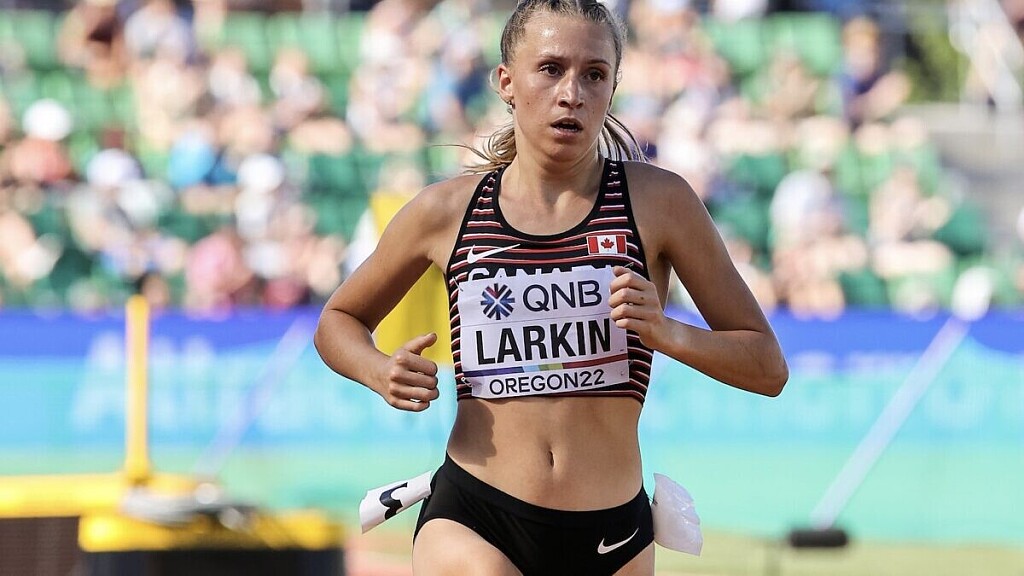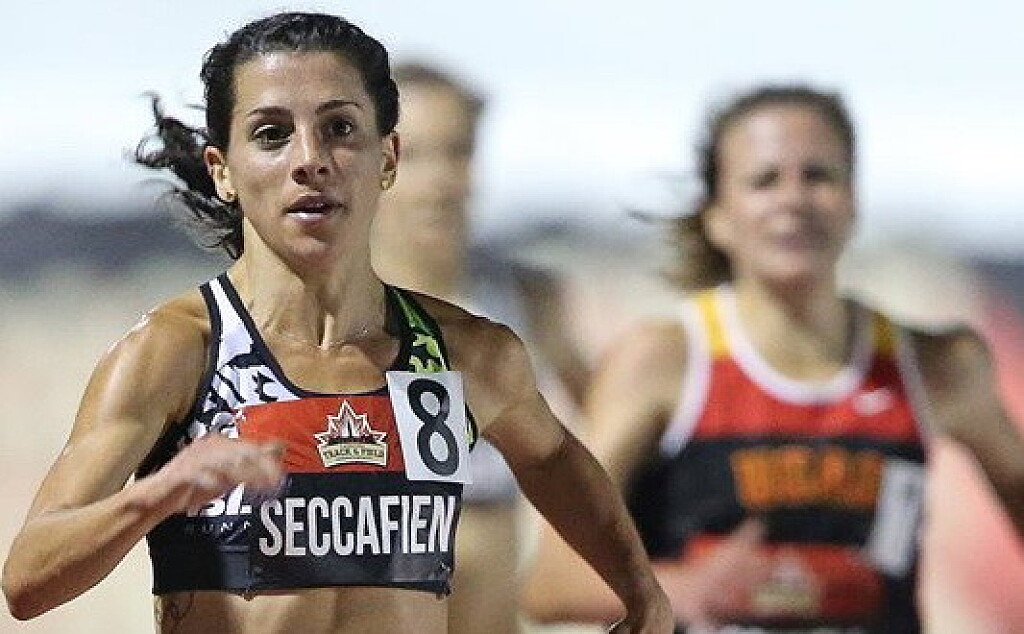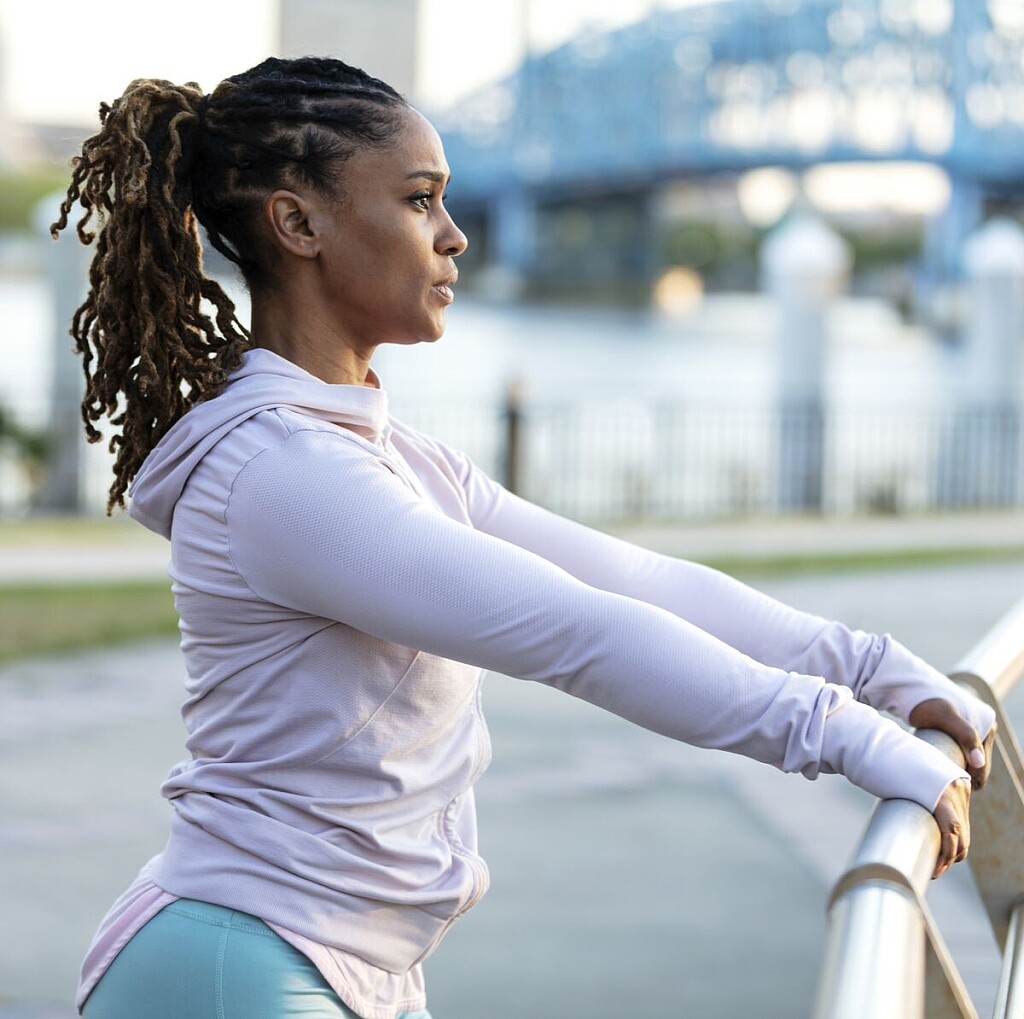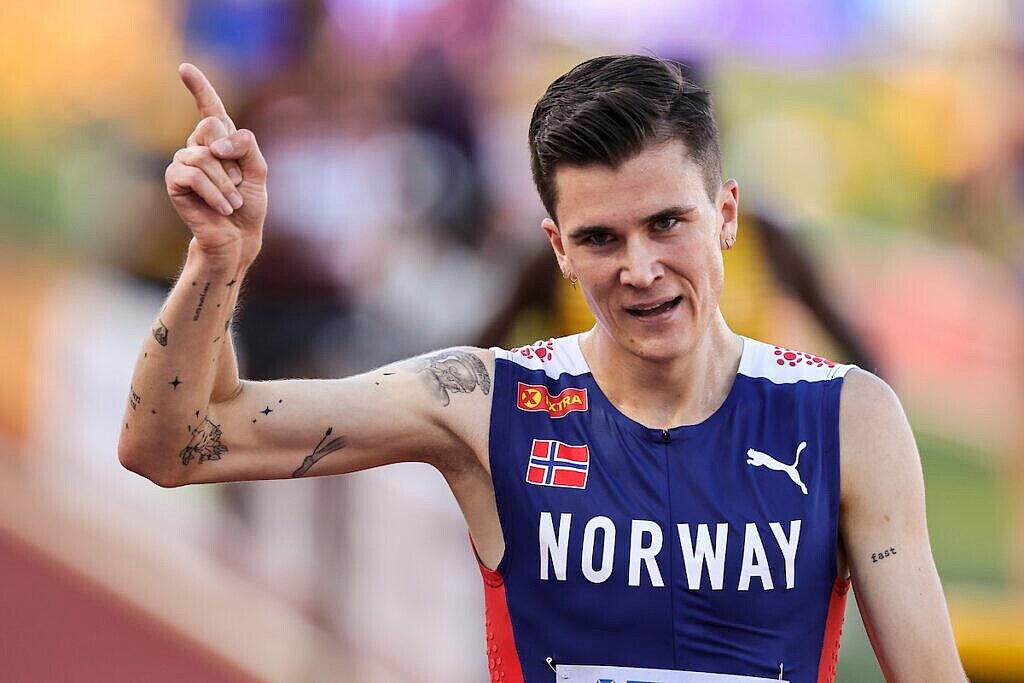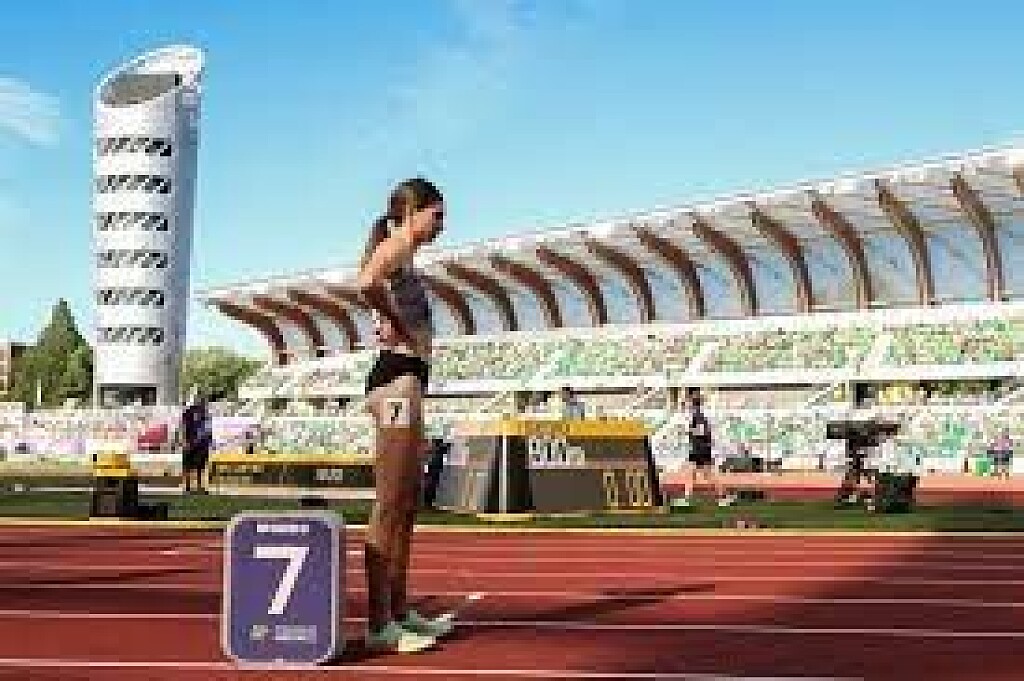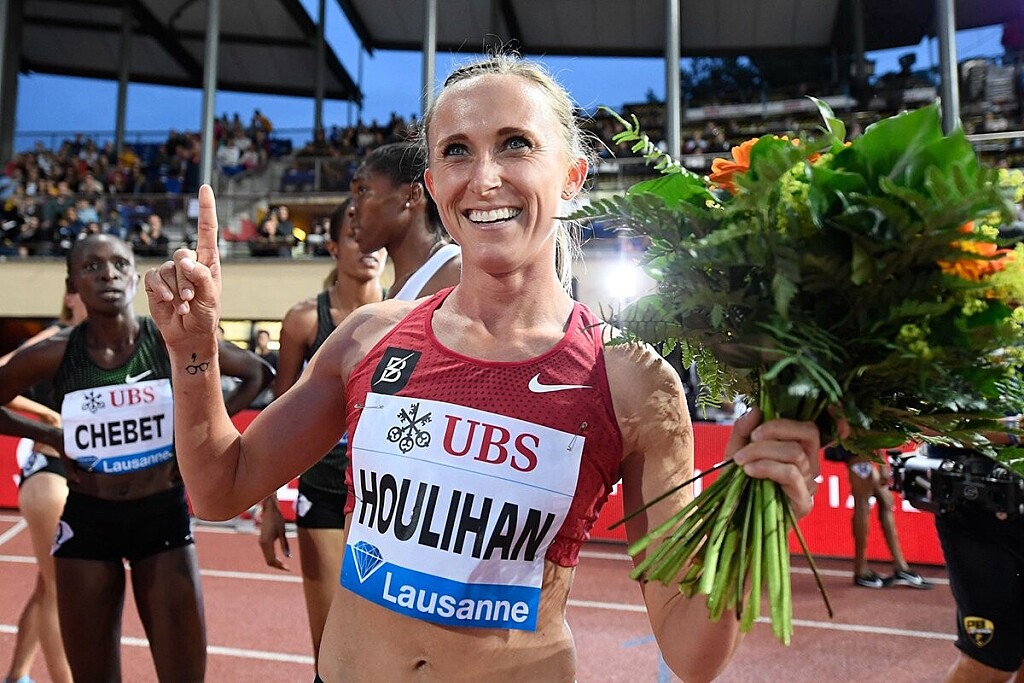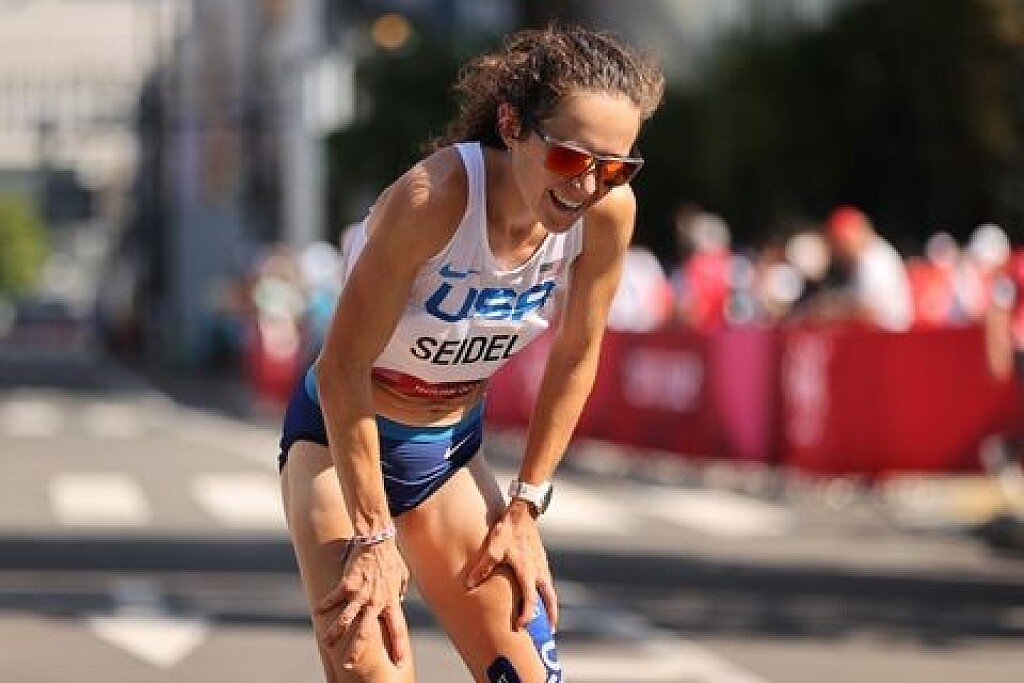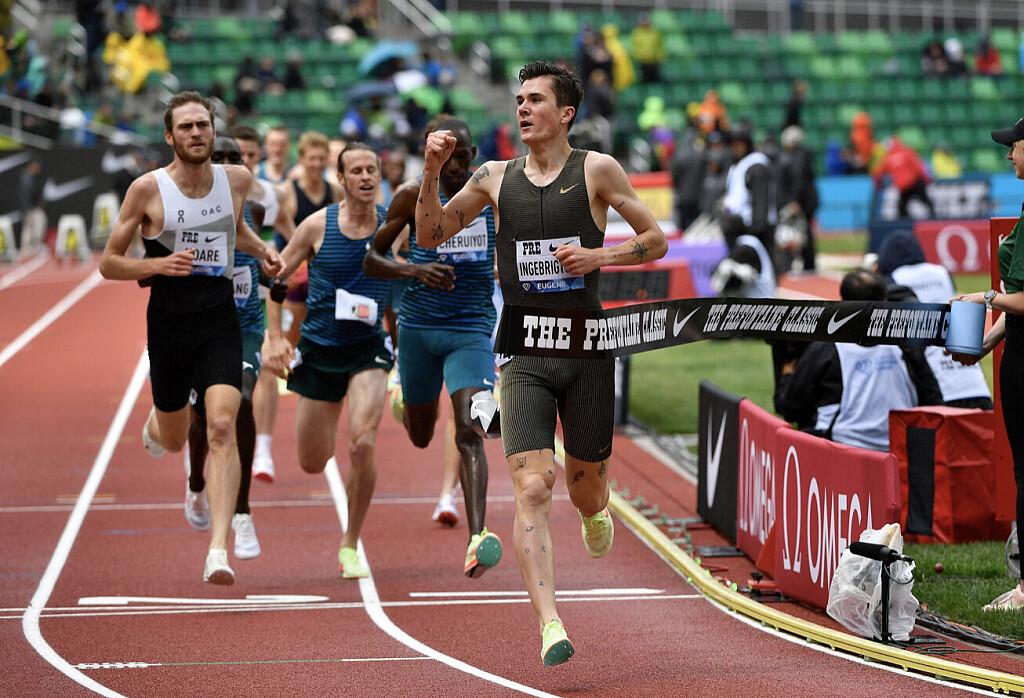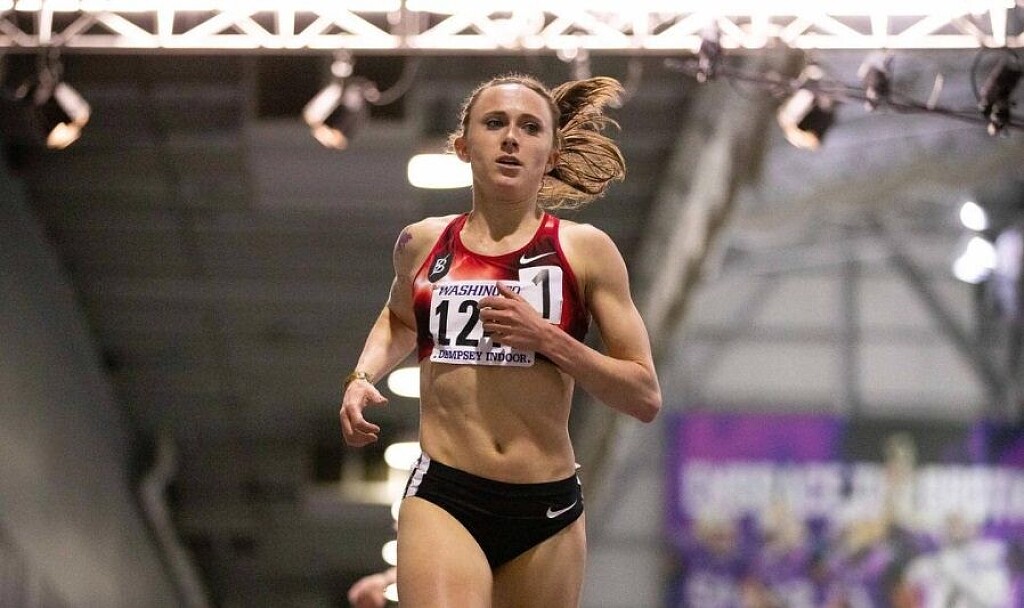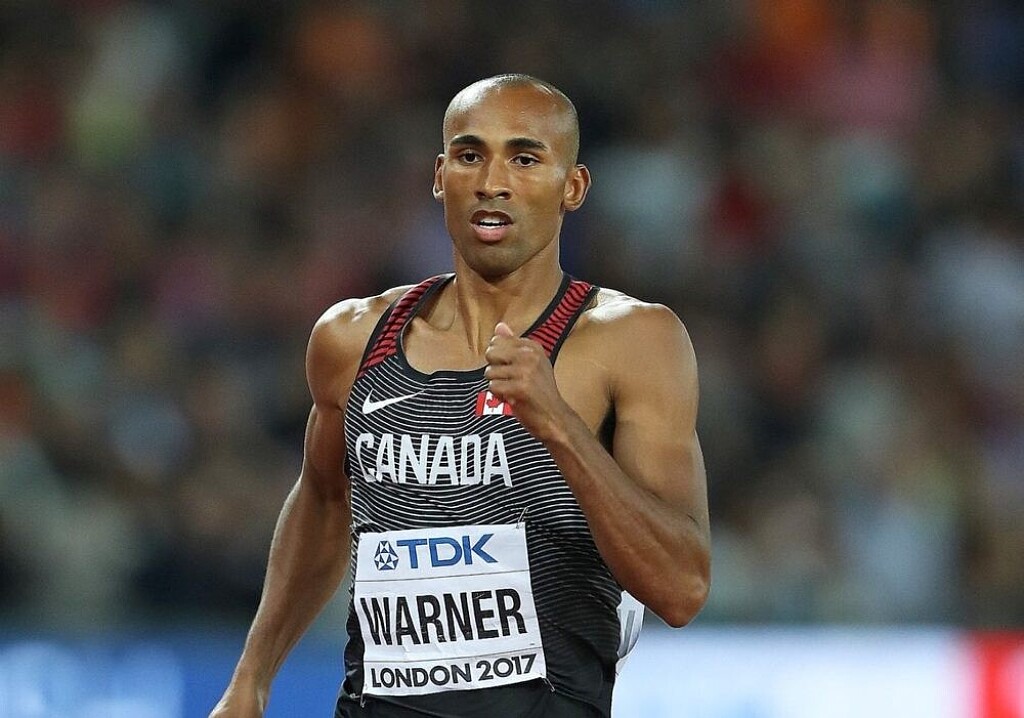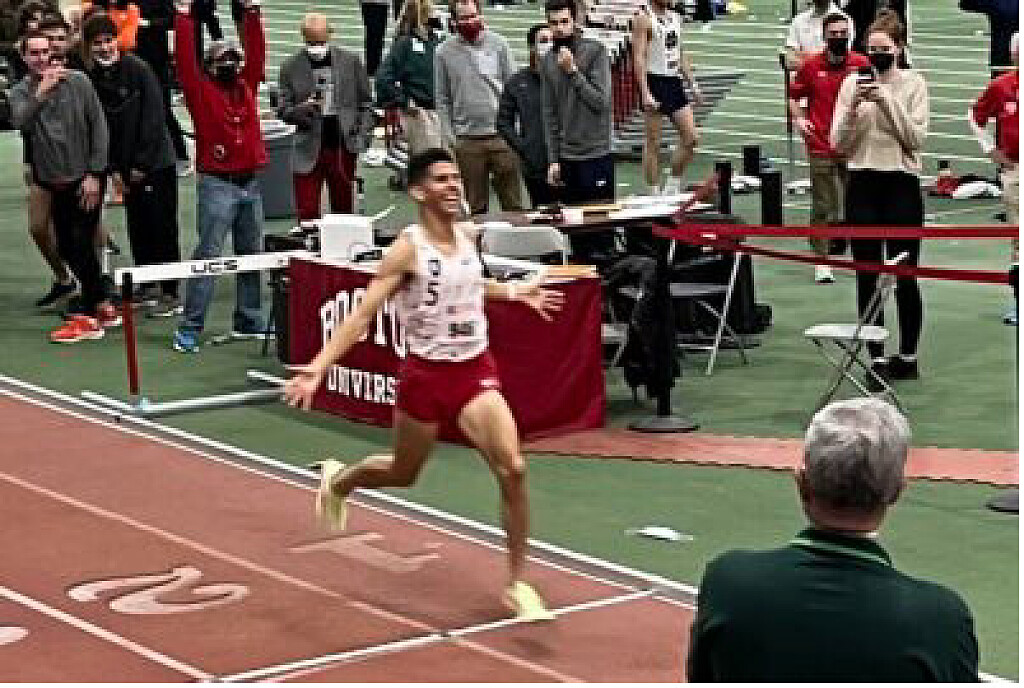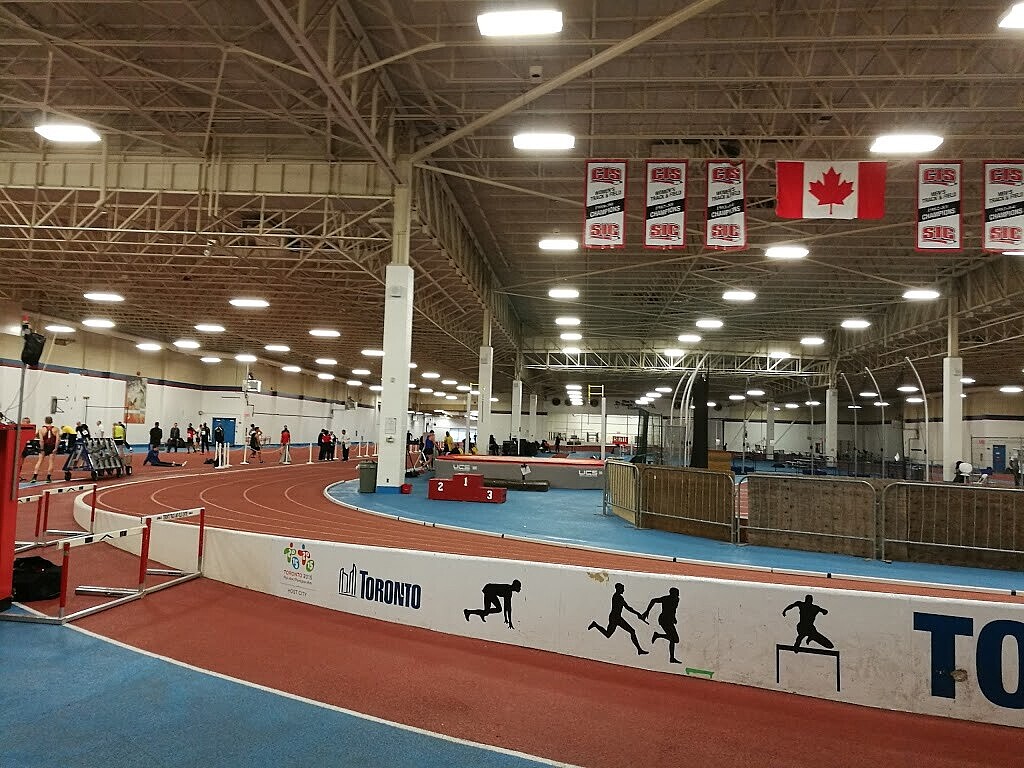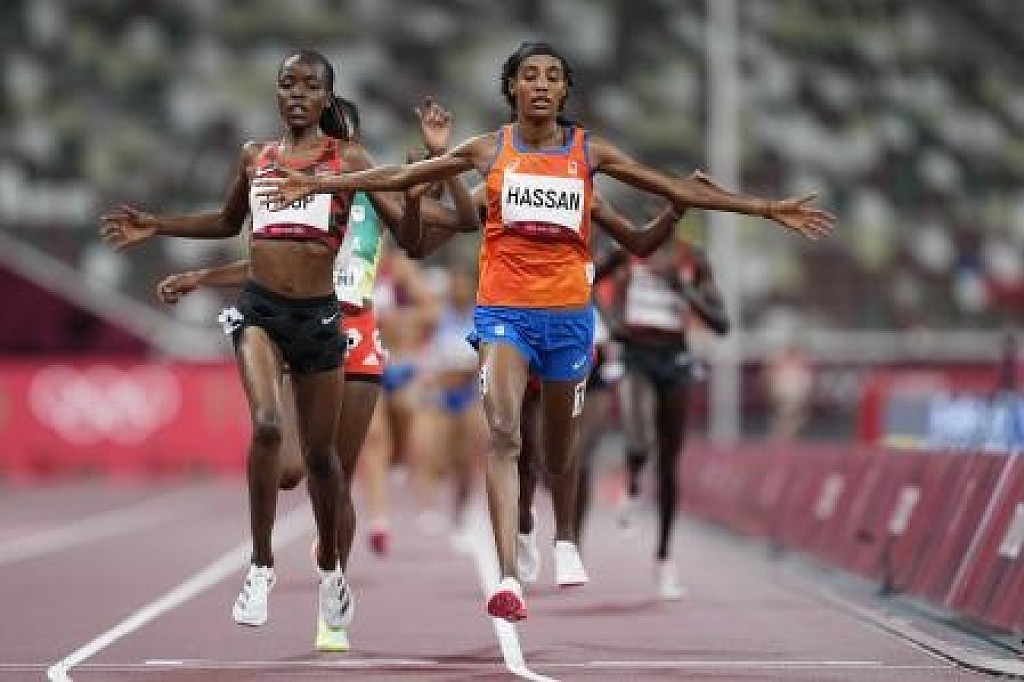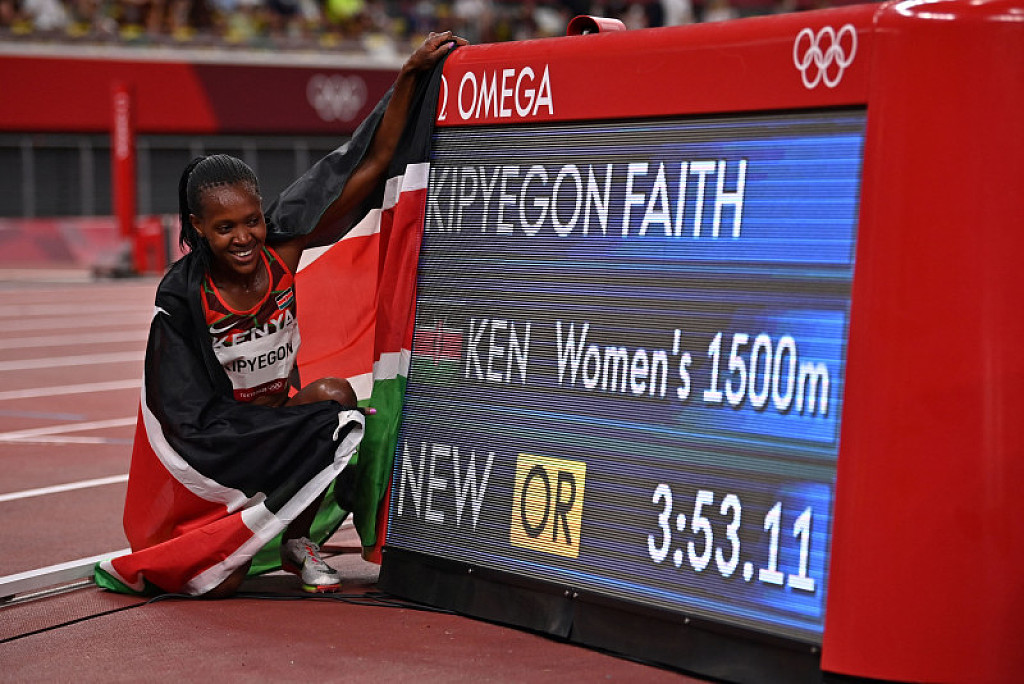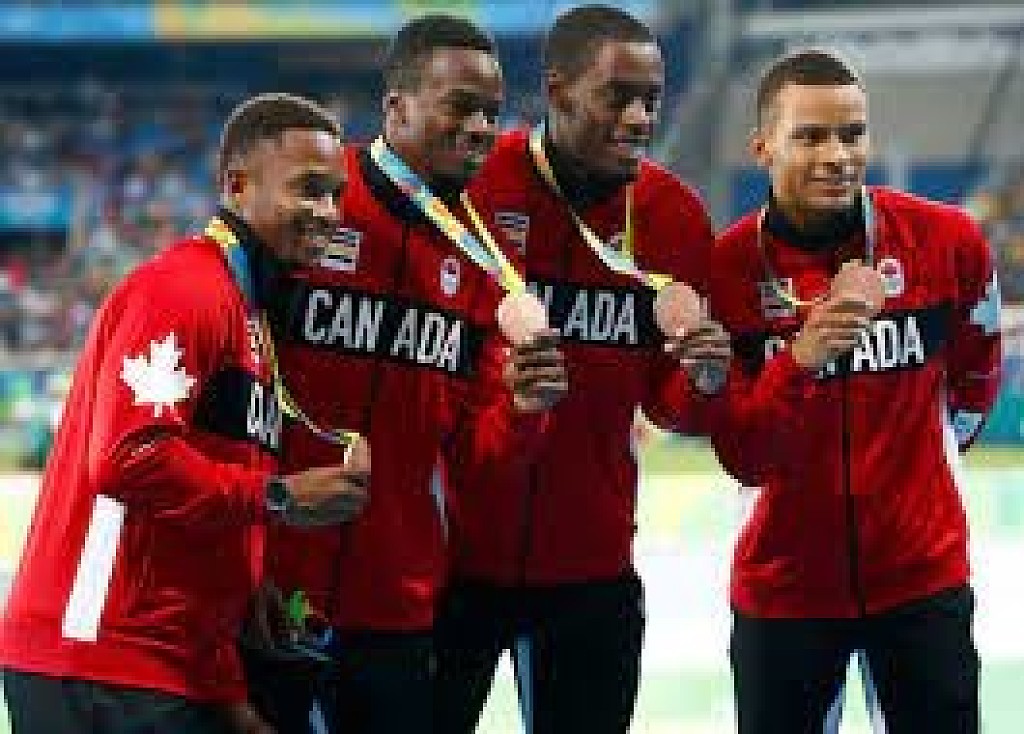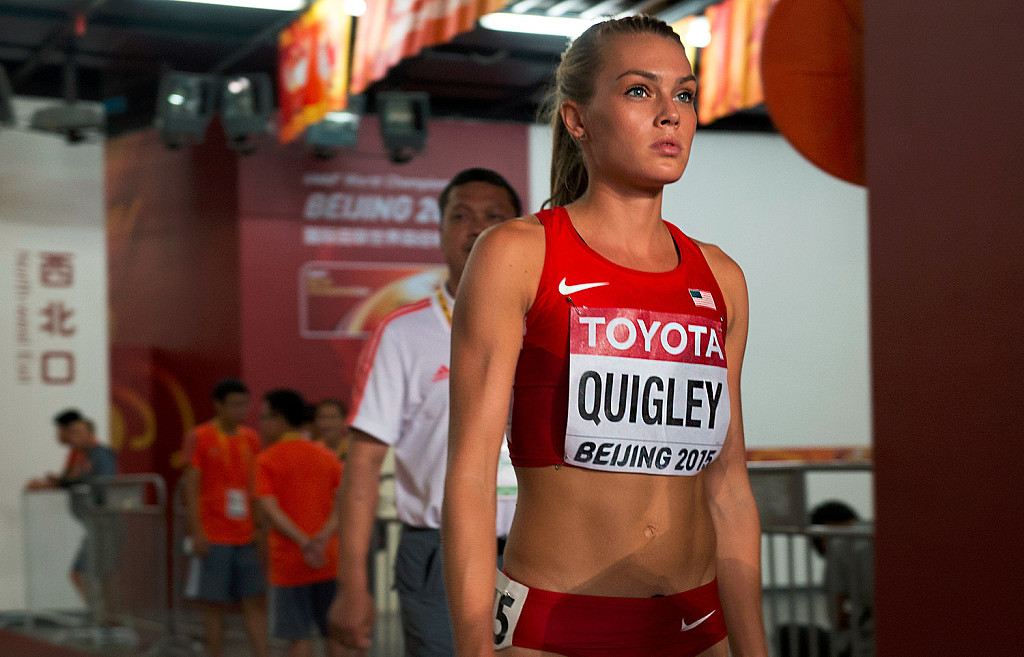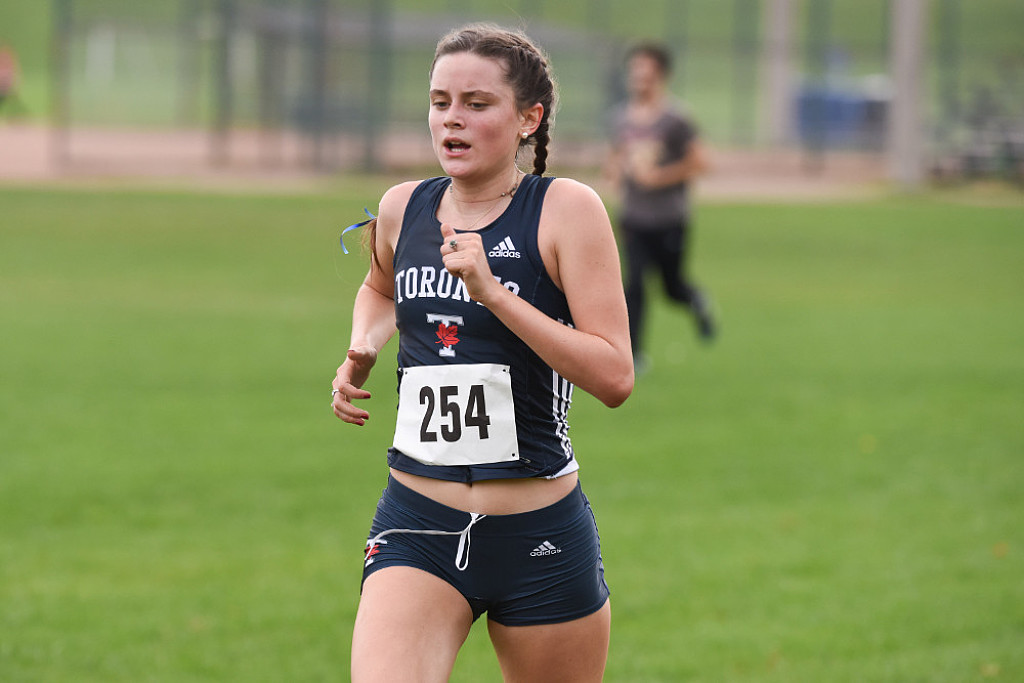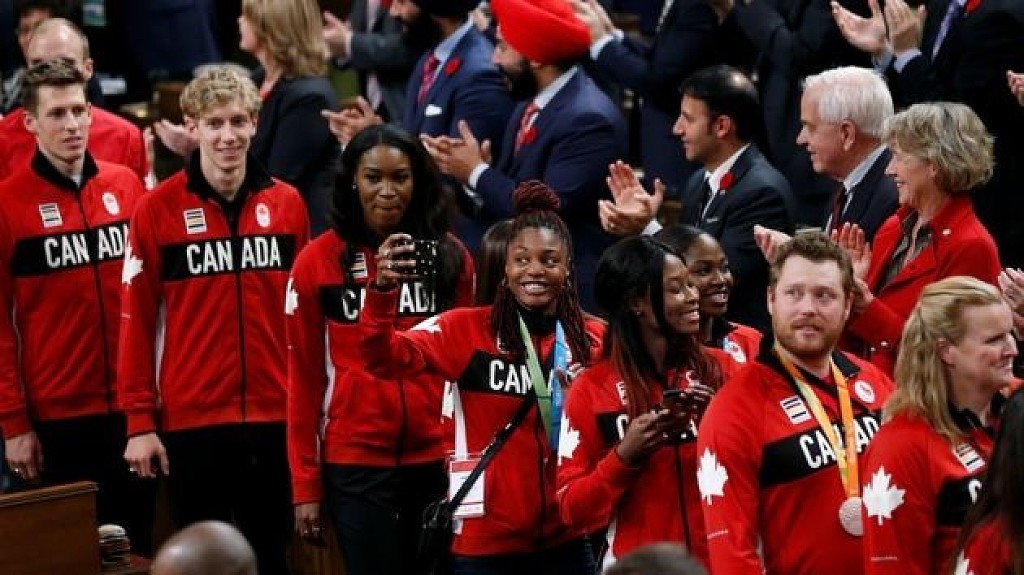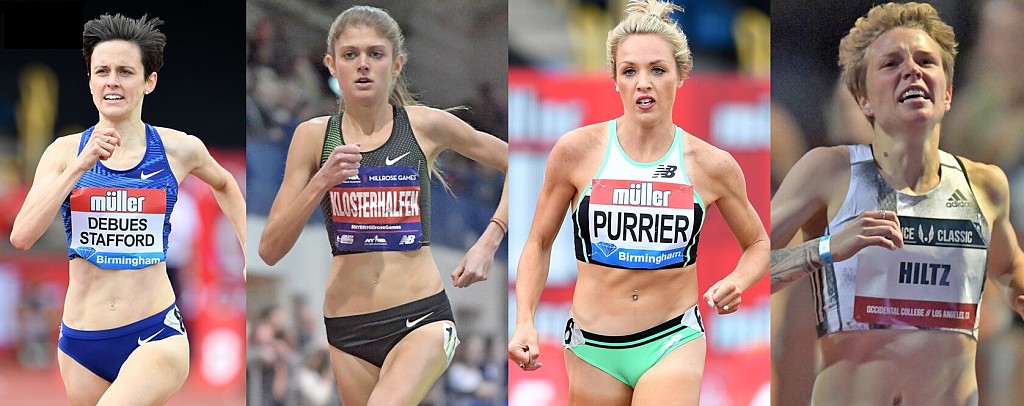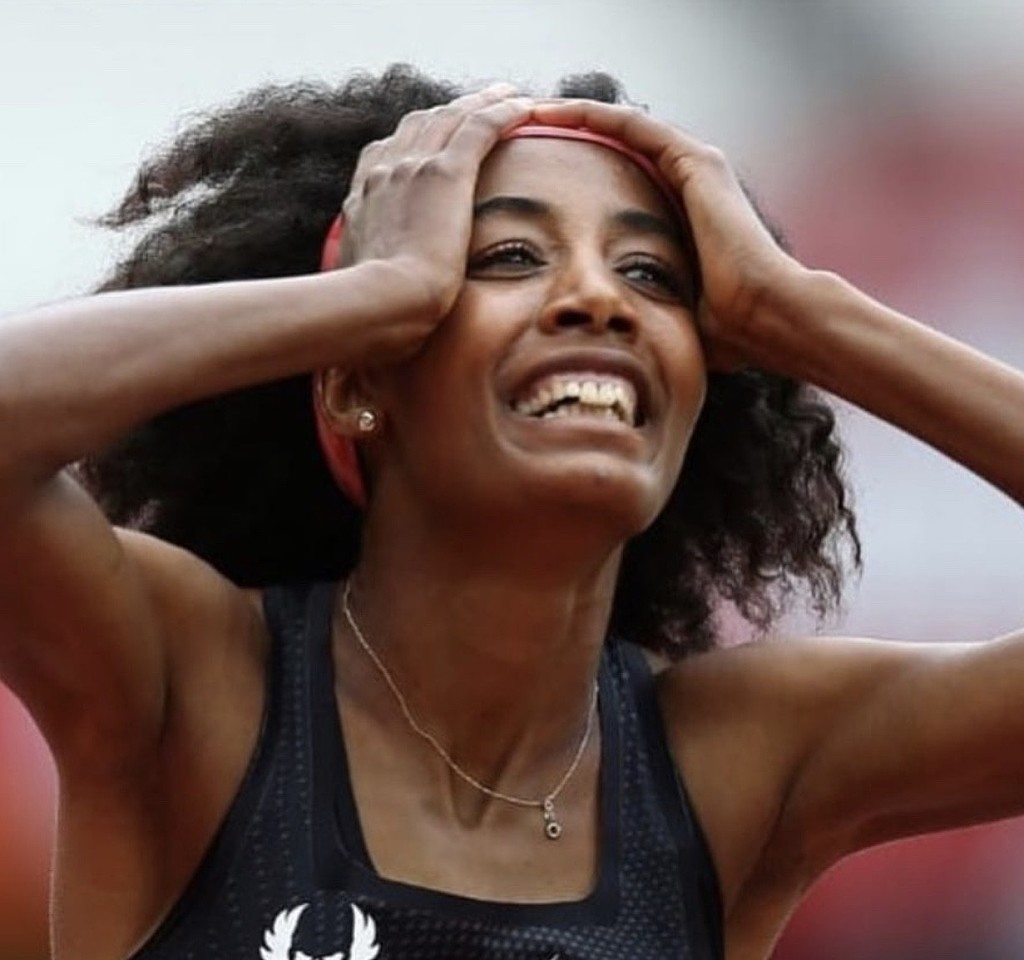Running News Daily
Running News Daily is edited by Bob Anderson. Send your news items to bob@mybestruns.com Advertising opportunities available. Train the Kenyan Way at KATA Kenya and Portugal owned and operated by Bob Anderson. Be sure to catch our movie A Long Run the movie KATA Running Camps and KATA Potato Farms - 31 now open in Kenya! https://kata.ke/
Index to Daily Posts · Sign Up For Updates · Run The World Feed
Articles tagged #DeBues-Stafford
Today's Running News
Ontario runner signs pro contract with Under Armour
On Thursday, Rosseau, Ont., native Gracelyn Larkin announced her contract with Under Armour’s pro running club, Dark Sky Distance, which is based in Flagstaff, Ariz. The 5,000m Canadian outdoor champion from 2022 is a recent graduate of Northern Arizona University (NAU), and formerly competed for the University of New Mexico (UNM) from 2019-2023.
Already located in Flagstaff following her graduation, Larkin will continue training at altitude under coaches Shayla Houlihan and Stephen Haas. The Canadian will be among former UNM teammate and Olympian Weini Kelati and 2022 New York City Marathon champion Sharon Lokedi, who also represent Under Armour.
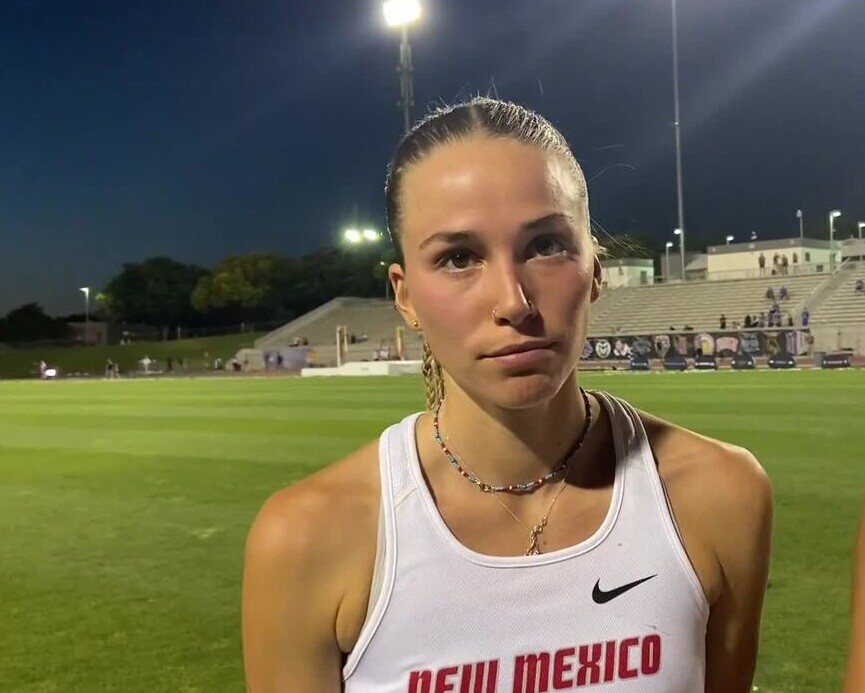
The 23-year-old boasts personal bests of 15:23.63 in the 5,000m and 32:32.61 in the 10,000m. A successful collegiate career saw Larkin earn All-American status seven times, before she went on to represent Canada in the 5,000m at the 2022 World Championships in Eugene, Ore.
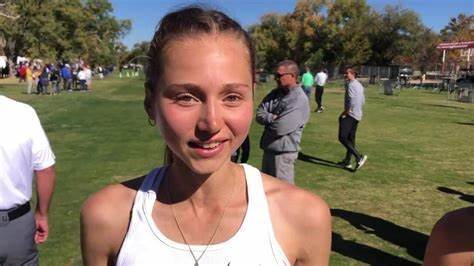
Over the summer, Larkin chased a spot on the Canadian Olympic team. At the Harry Jerome Classic 5,000m in Burnaby, B.C., in June, she clocked 15:25.83 to claim fifth place in a quick race; the time was just two seconds off her personal best. Later that month, Larkin competed at the Canadian Olympic Track and Field Trials in Montreal, placing fourth in the women’s 5,000m final with a time of 15:36.41. The UNM graduate was less than three seconds behind the winner, Gabriela Debues-Stafford. Despite strong efforts, Larkin fell short of qualifying for Paris 2024.
“I’m very grateful to be joining such an amazing group of hard-working individuals,” Larkin said in the announcement post on Instagram. “Working with Under Armour is an amazing opportunity and I can’t wait to represent them over the upcoming years. I look forward to learning from my teammates and coaches while I develop as a professional athlete!”
by Cameron Ormond
Login to leave a comment
Canadian Olympian Andrea Seccafien to debut at Tokyo Marathon
After reaching the Tokyo Olympic 5,000m final in 2021, the next two years were a whirlwind for Canadian 10,000m record holder Andrea Seccafien. The 33-year-old suffered a root meniscus tear in early 2022, then a stress fracture in 2023, and at times, contemplated calling it a career to go back to school. She felt like she was missing something and had one final box to check as a runner: the marathon.
“The plan has always been to move up to the marathon,” says Seccafien. “I will be running the Tokyo Marathon on March 3.”

Seccafien told Canadian Running that she wants to be on the Canadian Olympic team for the marathon in Paris: “The Olympic standard [2:26:50] is the goal in Tokyo. I would not be running the marathon if my coach and I did not think it was possible.”
There were a lot of changes for Seccafien last year, who moved from Melbourne, Australia, to Portland, Ore., and back to Melbourne. She left Nike Bowerman Track Club in November 2023 after two years of training under coach Jerry Schumacher. She joined the group with fellow Canadian Lucia Stafford in November 2021 (who also subsequently left the club).
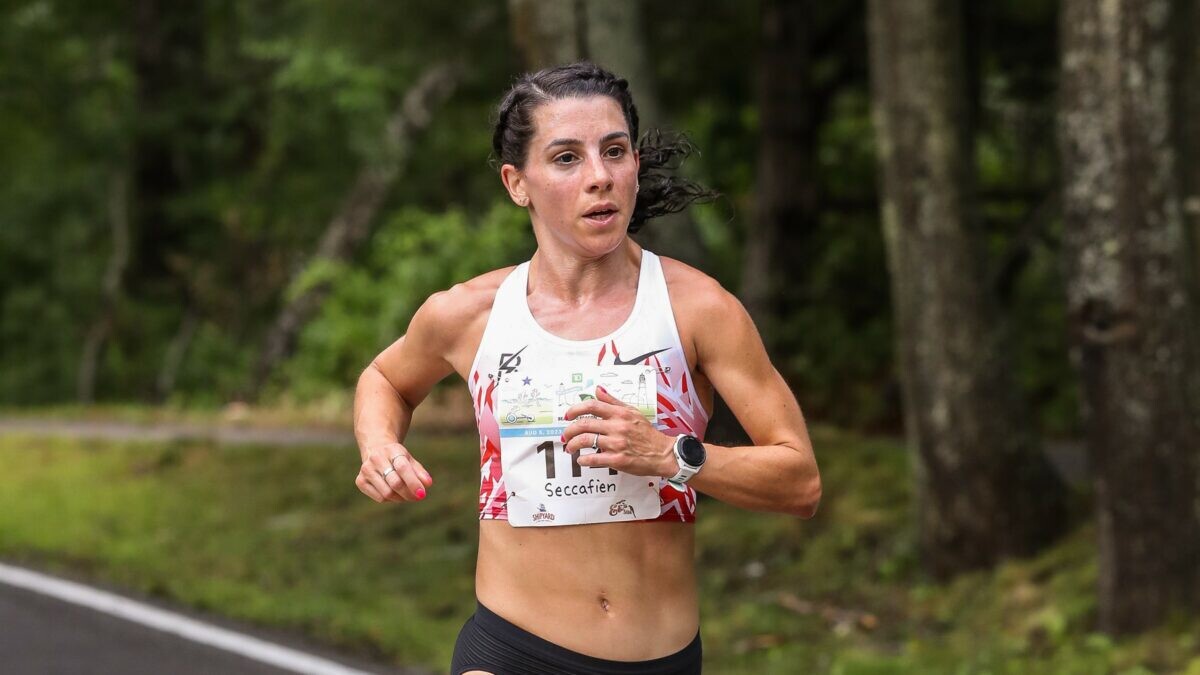
Seccafien says she left Bowerman on good terms. “It wasn’t anything with Jerry; I just did not have a community in Portland or Eugene,” she says. “My life was in Australia, and not in the U.S.” Seccafien is the ninth woman to leave Bowerman Track Club in the past two years, leaving the team with only two women on their roster, according to their website.
When asked about the downfall of the Bowerman team and the timeline around Shelby Houlihan’s doping suspension, Seccafien said that Gabriela DeBues-Stafford was the only athlete who left for that reason specifically: “No one else thought that way about Shelby,” she says. “Everyone in the club has been open with each other’s decision, and I think everyone left for many different reasons.”
“When I joined, I thought running the marathon there would work with Bowerman. Jerry doesn’t have time to coach a marathoner; you’d essentially be training on your own,” says Seccafien. Schumacher took a role with the Oregon Ducks group in Eugene, Ore. (two hours from Portland) while still coaching the Bowerman group. “It’s now a totally different environment than when I joined.”
Since returning to Melbourne, Seccafien has begun working remotely with Canadian physiologist and coach Trent Stellingwerff, who also coaches Olympians Natasha Wodak and DeBues-Stafford. “I wanted to find someone willing to coach me remotely and to give me some stability in my life again,” she says. “Trent calls the shots on mileage, and I just follow his plan. Our training is based more on intensity rather than miles.”
Seccafien says she now does most of her training on her own, with her partner, Jamie, occasionally joining her on the bike. “Like everyone, I’ve started doing double threshold workouts, and Jamie, who’s an exercise physiologist, will test my blood lactate.”
Seccafien told Canadian Running that training has not been easy. “There were a lot of lows. I felt like I had retired at times,” says Seccafien. “I could not put any load on my knee for four months to recover from my meniscus surgery… I could only swim, but could not kick my legs.”
She says it was great when she was finally able to run again, but shortly after, she got a stress fracture –another huge low. “Now, I’m just trying to stay consistent and take things as they come,” she says. Seccafien is seven weeks out from the 2024 Tokyo Marathon, where she will be in the elite field alongside Chicago and London marathon champ Sifan Hassan, whom Seccafien last ran against in the 5,000m final at the Tokyo Olympics (where Hassan won gold).
by Marley Dickinson
Login to leave a comment
Tokyo Marathon
The Tokyo Marathon is a world-renowned annual marathon held in Tokyo, Japan. As one of the prestigious Abbott World Marathon Majors, it attracts elite and amateur runners from around the globe. The race holds World Athletics Platinum Label status, recognizing its high competitive standards, top-tier organization, and international appeal. Sponsored by Tokyo Metro, the Tokyo Marathon has grown into one...
more...Four ways runners can take care of their mental health this season
For some runners, the holiday season is a challenging time of year. Societal expectations can make those who don’t want to be particularly festive feel like they must either put on a good front or stay home. Whether you celebrate or not, this time of year can be hard to navigate and can leave runners (and everyone) dealing with complicated feelings.
The Canadian Mental Health Association (CMHA) website shares that more than half of Canadians report feelings of anxiety, depression and isolation at this time of year. Here are a few ways runners can protect their mental health during the holiday season.
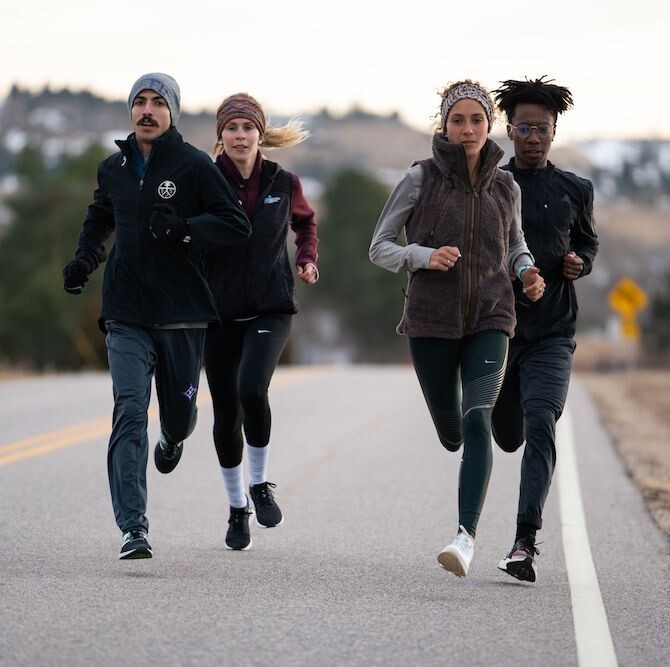
1.- Festive flexibility
Give yourself the gift of flexibility in your running routine. Acknowledge that the holiday season can be hectic, and recognize that it’s OK to adjust your training plan temporarily. Be adaptable, allowing room for extra rest days and shorter runs, when needed. You’ll maintain a positive relationship with running and reduce unnecessary pressure on yourself. Missing a few runs over the holidays is not going to have an impact on your long-term running goals (but beating yourself up for doing so might).

2.- Connect with your community (if you want to)
The holiday season can be especially tough if you are feeling lonely. Your local running community can be a positive place to connect with other runners, and chances are, others are experiencing similar feelings. Signing up to volunteer at your local parkrun, or heading out for a run with your local running community may give you a much-needed boost. If you’re not feeling up to running and don’t feel like socializing, that’s also OK. CMHA suggests doing something special for yourself: cooking your favourite foods, going to a movie or starting a holiday project.
3.- Go for a run (if that helps)
For many of us, running is a daily pick-me-up. If running is supporting your mental health and is something that helps you tackle everyday life challenges, don’t be afraid to make it a priority. Need to press pause on making holiday treats with the fam to fit in a few stress-relieving miles? Consider this your reminder that you never need to apologize to others for taking care of your physical and mental health needs. Your family and friends will benefit from the healthier, happier post-run you, and you’ll be able to savour the family antics while feeling relaxed.
4.- Don’t be afraid to seek help
While seeking therapy and talking about mental health is becoming less stigmatized, it can still be really hard to tell others that you are feeling low. Canadian Olympian middle distance champ Gabriela DeBues-Stafford recently shared about her own struggles on Instagram and encouraged others to seek help. “If you’re struggling, please reach out, and don’t lose hope,” DeBues-Stafford wrote. “I know it’s hard now, but the world is a better place with you in it.”
For a variety of reasons, many of us may not be comfortable sharing what we are going through with those closest to us. There are resources available if you need help navigating the challenges you are facing, or simply need to talk. Bigger Than The Trail is a non-profit that uses trail running as a platform to advocate for mental health, and will provide three months of online counselling through Betterhelp to anyone seeking help.
by Keeley Milne
Login to leave a comment
Jakob Ingebrigtsen to chase his national record at Oslo Diamond League
At the Paris Diamond League last week, the incredible Norwegian athlete and Olympic 1,500m champion Jakob Ingebrigtsen achieved a remarkable two-mile world best. On Thursday evening (afternoon for viewers in North America), the 22-year-old superstar will be competing in his home country, aiming to challenge his national record of 3:28.32 at the Oslo Diamond League.
Jakob’s WR bid
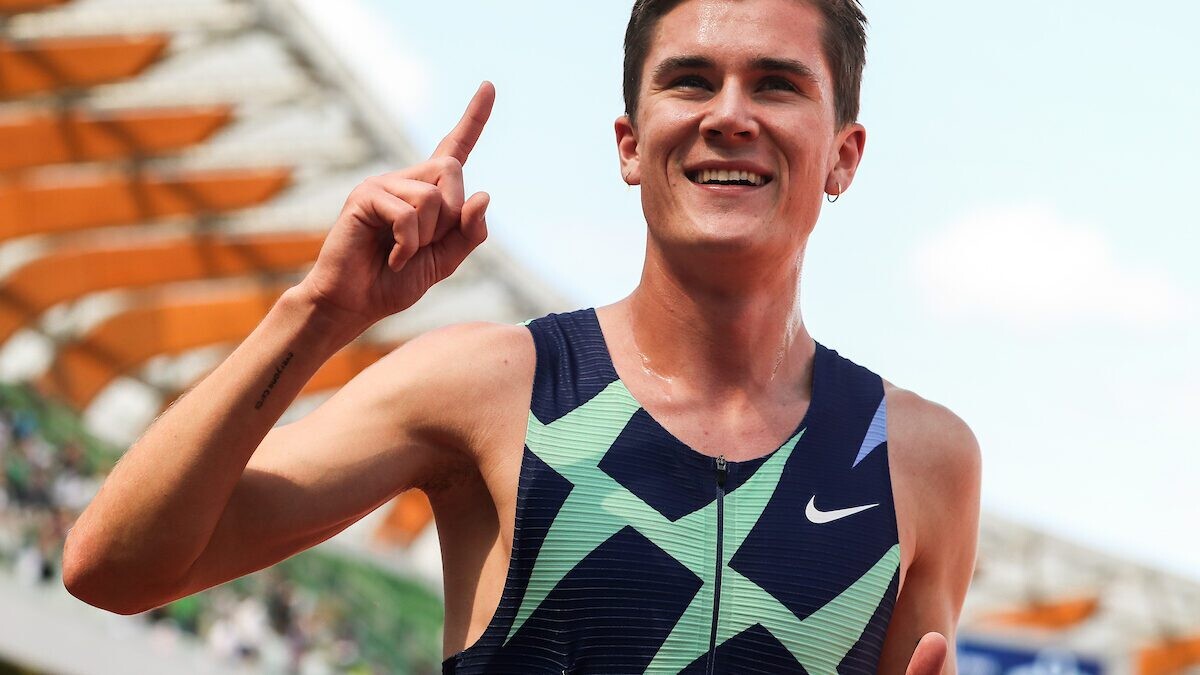
Ingebrigtsen headlines a deep men’s 1,500m field, featuring the silver and bronze medallists from Tokyo 2020, Kenya’s Timothy Cheruiyot and Josh Kerr of Great Britain. Other notable athletes are American Yared Nuguse and Mohamed Katir, who came off a Spanish national record performance over 5,000m in Florence two weeks ago, taking the win in 12:50.79.
During the pre-race press conference, Ingebrigtsen put his confidence on display and said he’s eager to chase a personal best and even take a shot at Hicham El Guerrouj’s 1,500m world record of 3:26.00 “If I break the world record Thursday, I deserve a statue,” said Ingebrigtsen. The Bislett Games meet director responded: “If you do it, I’ll personally set up a statue outside Bislett [Stadium].”
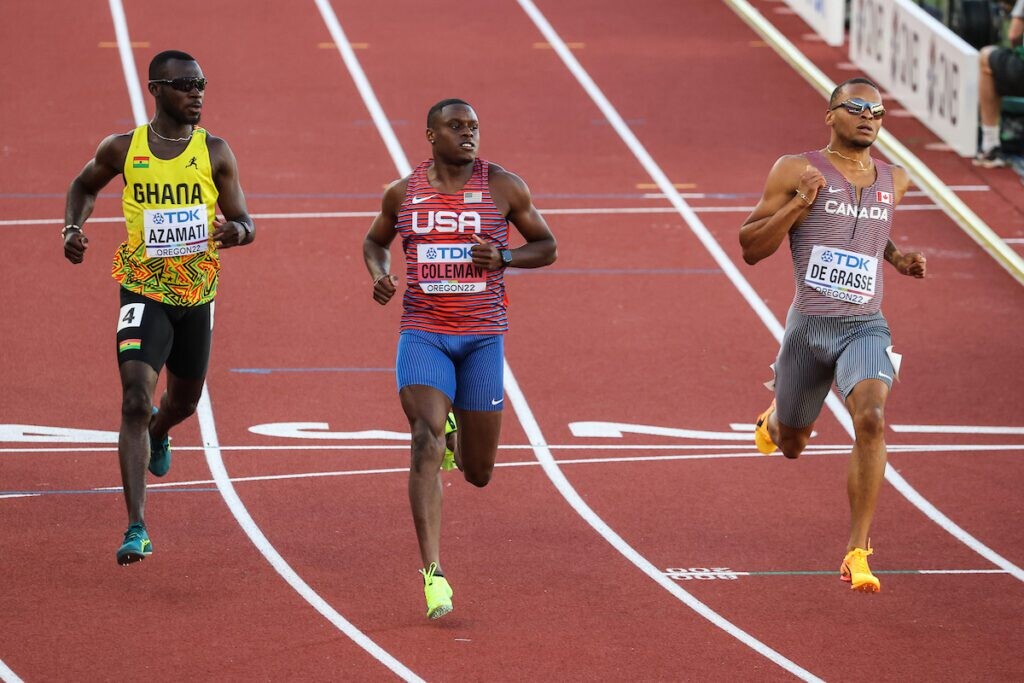
Although there has been a lot of world record talk from Ingebrigtsen and the media, the Wavelight pace in the 1,500m will be set to the meeting record of 3:29.12, going through 800m in 1:52 and the first kilometre in 2:19. Ingebrigtsen will have to close the final 500m in 66 seconds and a sub-53-second final lap if he hopes to take down the world record.
Canadians in Oslo
Two prominent Canadian athletes are competing at Oslo Diamond League Thursday. Olympic 200m champion Andre De Grasse looks to get his season back on track in the men’s 200m. The last year hasn’t been easy for De Grasse, changing coaches, battling injury and a slow start to the 2023 season. In his first three 200m race of the season, he has struggled to dip under the world championship standard mark of 20.24 seconds, a time he has frequently sailed under over the last two seasons. In his first Diamond League race in Doha on May 5, his turnover in the final 70 metres wasn’t there, and he faded to sixth in 20.35. It’s been three weeks since his last race, and he will come into Oslo as one of the favourites on paper, having the second-fastest personal best in the field after the young American, Erriyon Knighton.
Canadian mile and 1,500m record holder Gabriela DeBues-Stafford had a successful outing in her Diamond League return in Florence two weeks ago. After a full year off due to injury, the 27-year-old Olympic finalist ran to a season’s best 4:03.64 over 1,500m. She will come into the Oslo Diamond League as the top-ranked woman in the mile event. This race in Oslo should be more tactical and better suited for DeBues-Stafford’s racing style than the 1,500m in Florence, which resulted in a new world record for Faith Kipyegon.
Two other athletes who will be a tough test for DeBues-Stafford are Jessica Hull, who recently set an Australian record of 3:57.29 in Florence, and Ethiopian rising star Birke Haylom, who ran a giant personal best of 3:57.66 for third place at the Rabat Diamond League. DeBues-Stafford’s mile best is 4:17.87 from Monaco Diamond League in 2019, but any result under 4:23 for her would be a step in the right direction as she continues to prepare for the 2023 World Athletics Championships later this summer.
by Marley Dickinson
Login to leave a comment
Olympian Madeleine Kelly signs with Asics
Canadian 800m Olympian Madeleine Kelly has gone from winning her first race in a pair of Asics shoes to signing her first professional contract with the brand. This has been a promising development as Kelly begins her journey to the 2024 Olympic Games in Paris.
The 27-year-old from Pembroke, Ont., is one of only eight Canadian women who have ever broken the two-minute barrier in the two-lap event. In 2022, she represented Team Canada at the World Indoor Championships, World Outdoor Championships and Commonwealth Games.
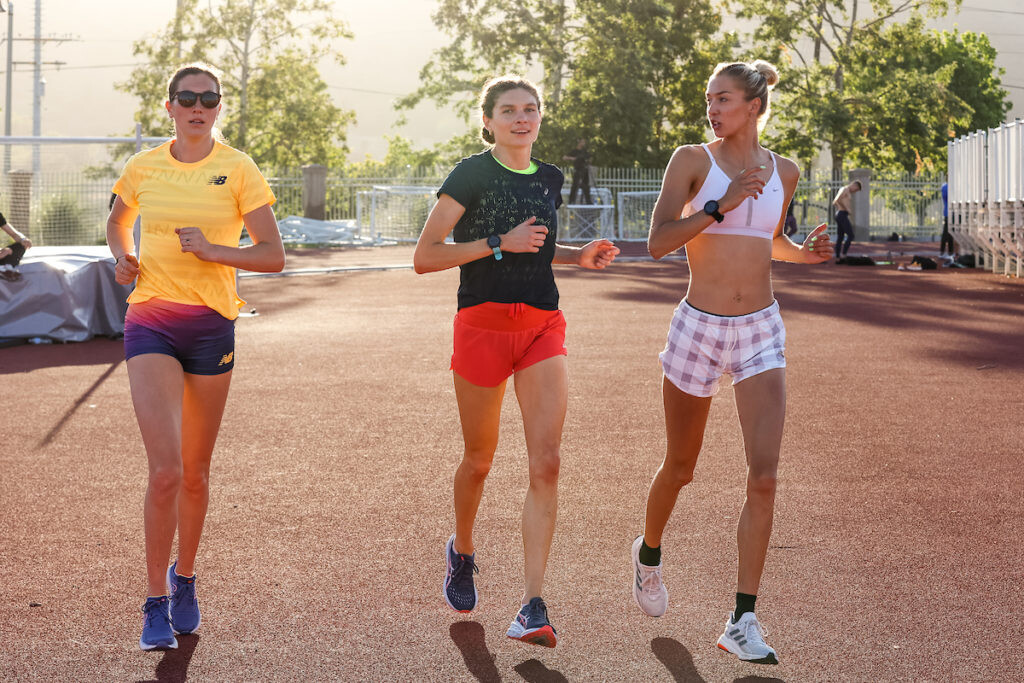
The possibility of turning pro wasn’t on Kelly’s radar until she was approached by Asics last year. “It feels great to turn pro and sign with such an established brand,” says Kelly. “I am excited! I can now say running is my job… in a good way.”
Kelly only made her first national team in 2021, for the Tokyo Olympics. She finished fifth in her 800m heat, narrowly missing qualification to the semi-final in a sprint finish.
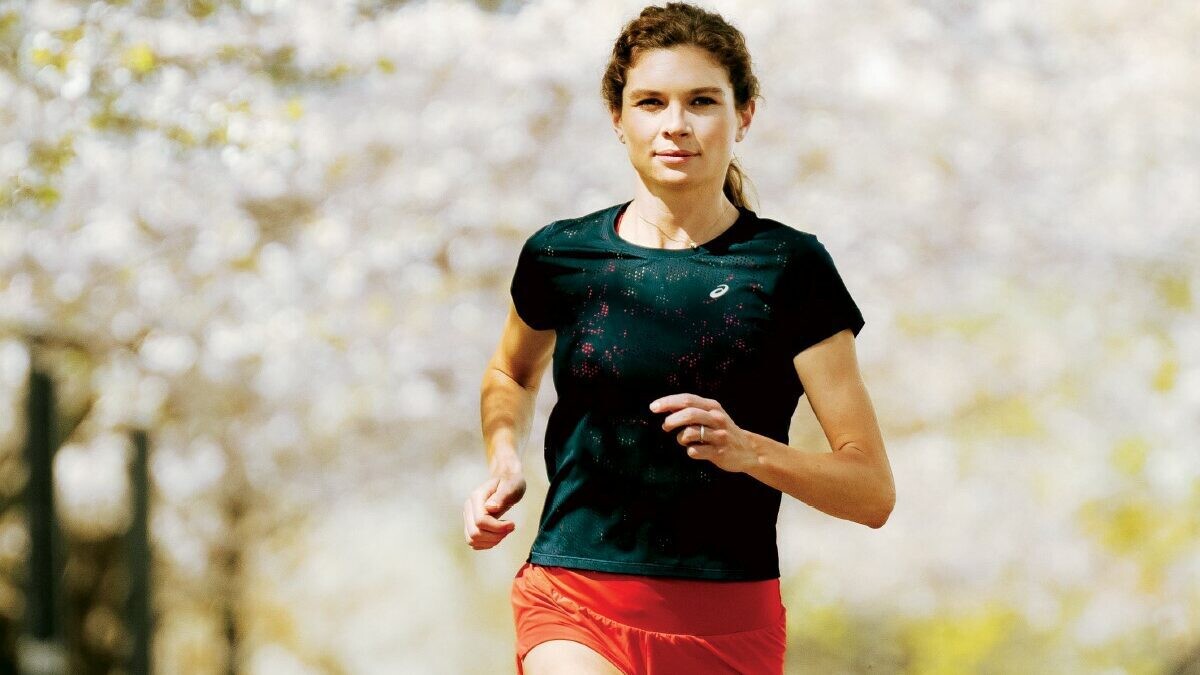
She says that even though she went to the Olympics, as an athlete training in Canada, she knew a pro contract wasn’t a guarantee. “There is a big divide between athletes in the U.S. and Canada,” says Kelly. The U.S. market is about 10 times the size of Canada’s, and that equals more sponsorship dollars and fans, increasing an athlete’s marketability.
Kelly says her goal heading into the 2023 season is to stay consistent and run fast times; ultimately, her goal for the season is to reach the world championship semi-final. “I really want to be a semi-finalist or finalist at a major championship,” says Kelly. “It would be a huge confidence boost for me, before heading into the Olympic year.”
Kelly took an uncommon route to professional running, staying in the Canadian U Sports system (she attended the University of Toronto) instead of going to the NCAA. Her 2017 cross-country team at U of T featured five athletes who have represented Team Canada at some point in their career (Sasha Gollish, Lucia Stafford, Gabriela Debues-Stafford and Jazz Shukla).
“We had a talented group of women, and we all got along well,” says Kelly. “It was an inspiring training environment, and we all just wanted to make each other better.”
Kelly currently lives and trains in Hamilton, Ont., under the supervision of her collegiate coach, Terry Radchenko, who is now in his second year with the University of Guelph track and cross-country program.
One aspect of training in Canada Kelly has enjoyed is that she’s been able to pursue her dream in her own way, having friends and family close by. “I think you get the best results when you train and compete in a way that’s authentic to you,” she says.
When she isn’t training, Kelly writes freelance stories for Canadian Running and is a co-host of “The Rundown” on The Shakeout Podcast. She is also a volunteer coach with the PACK Running Club in Hamilton, Ont., where she enjoys helping young runners find a love for the sport.
by Marley Dickinson
Login to leave a comment
Runners and stress fractures: why you should start taking vitamin D
If you’re a regular runner, you probably know someone who has had to take time out due to a dreaded stress fracture. You may have heard of pro athletes like Molly Seidel and Gabriela DeBues-Stafford taking time out for stress reactions.
Vitamin D has long been known to help the body absorb and retain calcium and phosphorus; both are critical for building bone. Recent studies have shown that vitamin D insufficiency is not only common in athletes but can be a serious factor leading to a stress fracture. Should you be taking a supplement? Here’s what you need to know.
Stress fractures v. stress reactions

Readers may be more familiar with the term “stress fracture,” which is further along the stress injury spectrum. (In other words, a stress reaction may lead to a stress fracture if left untreated.) The cause of the initial reaction (and subsequent possible fracture) is usually overuse, as opposed to more serious traumatic types of fractures from falls or other accidents.
Stress injuries are classified upon diagnosis: early (stress reaction) or late (stress fracture). A stress reaction can be considered similar to a deep bone bruise. A stress fracture is a small hairline crack in the bone.
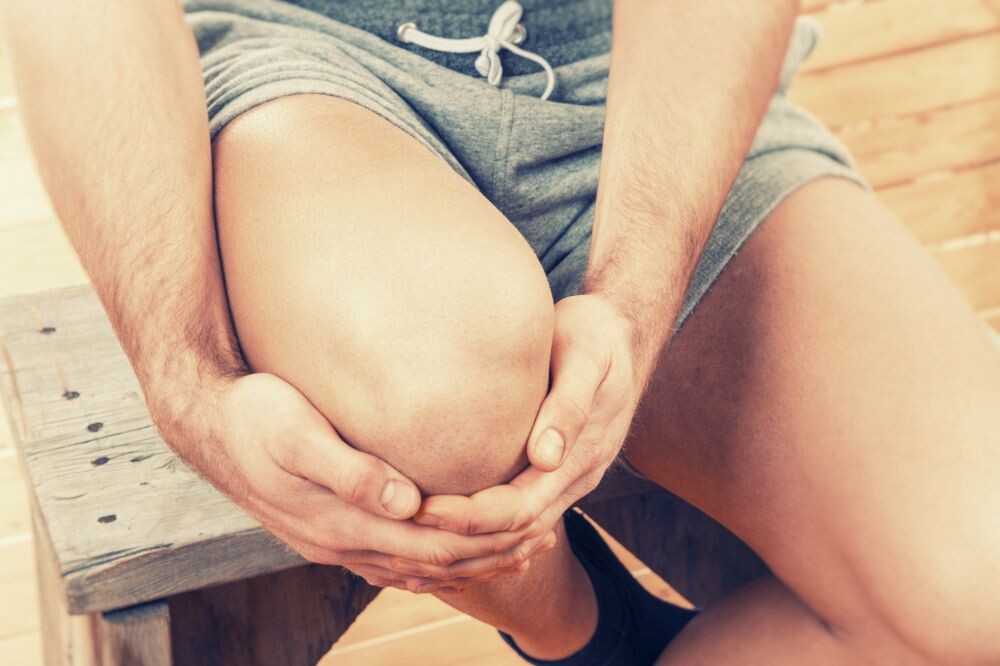
The study
Researchers reviewed more than 180 scientific studies to determine the impact of vitamin D on musculoskeletal health and athletic performance. They found that stress fractures impact approximately 20 per cent of all athletes, both elite and amateur.
The review explores the importance of vitamin D in athletes’ diets, what type of athletes are most likely to be affected by stress fractures and what precautionary measures athletes can take. While runners of any kind were one of the most common groups sidelined by stress fractures, athletes in a wide range of load-bearing sports are affected by them.
The takeaway
We get vitamin D largely from the sun’s ultraviolet-B (UVB) rays, and many people, particularly those living above the equator, are vitamin D deficient. While only one per cent of the general population is impacted by stress fractures, one in five athletes (20 per cent) will experience one.
Vitamin D plays important role in preventing stress fractures and can be safely taken as a preventative measure. Runners should ask their doctor for regular bloodwork to check vitamin D levels, along with calcium, creatinine and parathyroid hormone. Insufficient levels of vitamin D can be restored by optimizing your diet (while few foods naturally have much vitamin D, some are fortified with it) and taking supplements.
Work with your doctor to find the right amount of vitamin D to take: researchers determined that the prevalence of stress fractures decreased when athletes are supplemented daily with 800 IU vitamin D and 2,000 mg calcium.
by Keeley Milne
Login to leave a comment
An Olympian, a burrito, a failed drug test: Former ASU runner Shelby Houlihan looks to rebound after doping ban
On a cloudy, characteristically cool December night in Beaverton, Oregon, Shelby Houlihan, the American record holder in the 1,500 and 5,000 meters, accompanied Courtney Frerichs, the Olympic silver medalist in the steeplechase, and Frerichs’ sister, Lindsey, to an authentic Mexican food truck near her home.
The three ordered carne asada burritos and returned to Houlihan’s house to eat and watch “The Bachelorette.”
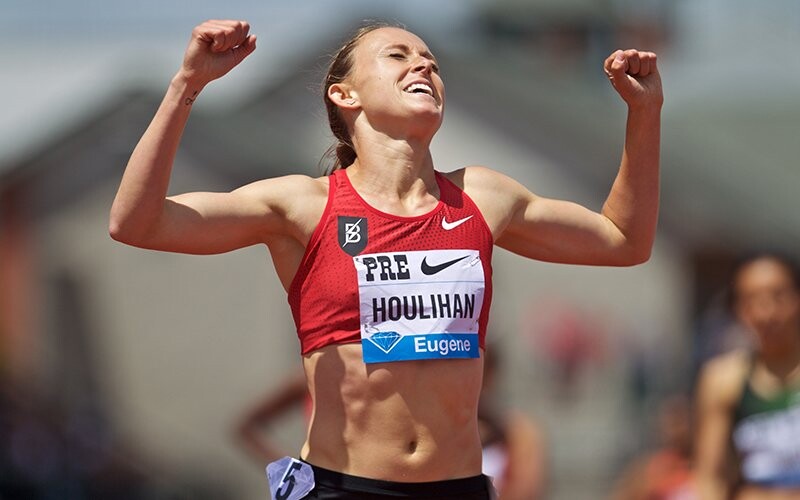
The next morning, on Dec. 15, 2020, the former Arizona State standout was given a random drug test. Weeks later, in mid-January, Houlihan was notified in an email from the Athletics Integrity Unit (AIU) that her urine sample revealed the presence of 19-norandrosterone (19-NA), a metabolite produced by the substance nandrolone – an anabolic steroid prohibited by the World Anti-Doping Agency (WADA).
She was issued a provisional suspension, which set off a cascade of events that led to a four-year ban, knocked her out of the U.S. Olympic Trials leading up to the Tokyo Olympics and will bar her from competing until January 2025 when she will be almost 32.
It is, Houlihan said, “an athlete’s worst nightmare.”
Houlihan, 29, has lost the financial support of Nike. She also saw former teammate Gabriela DeBues-Stafford leave the club rather than risk sanctions because of the Bowerman Track Club continued relationship with Houlihan.
Houlihan said her initial response to the positive test was “shock and disbelief.” She wondered, “How am I going to explain (the presence of a banned substance) when I don’t even know where it came from myself?”

Houlihan was at a high-altitude training camp in Flagstaff when she received the email.
“I opened up my phone to an email that was urgent, confidential and … it was this lab report of scientific words that I could not read,” Houlihan told Cronkite News.
The Sioux City, Iowa, native said she read the email over about 10 times and had to Google which substance triggered the positive test, because she had never heard of nandrolone.
Then she called Jerry Schumacher, her coach at BTC, the professional Nike club that Houlihan had trained with since graduating from ASU in 2015.
“I’m just sobbing and trying to tell him what’s going on, but crying too hard,” Houlihan said.
The long road
Today, Houlihan lives alone in Portland and said she has relied on her former BTC teammates, her boyfriend and her family for support. She does odd jobs, including food delivery, and continues to train with the hope of returning to competition at an elite level.
It is not a situation she envisioned growing up in Sioux City, Iowa, surrounded by runners, including her mother, Connie, and her uncle, Bob Prince, who competed in college.
After winning several state titles at Sioux City East High School, Houlihan continued her success at Arizona State, where she won the NCAA 1,500 meters in 2014 and finished as a 12-time All-American, the second-most in program history.
She holds five school records: the outdoor 800 and 1,500 meters, and the indoor 800, mile and 3,000.
That success set the stage for 2016 Summer Olympics, where she finished 11th in the 5,000 meters and was the highest-placing U.S. runner in the race.
She also finished fourth in the 1,500 meters and set the American record at the 2019 World Outdoor Championships.
More Olympic success felt inevitable.
Shock and disbelief
Elise Cranny, a close friend and former Bowerman teammate of Houlihan’s, remembers that news of the positive test “didn’t really sink in” at first.
“I came back to the house, and I was like, ‘Man, something is very off … something is not right,’” said Cranny, who was living with Houlihan during the camp. “I think the initial reaction from everyone was disbelief, and like, ‘Oh, this is something that’s going to get figured out’ because it’s seriously wrong.”
Schumacher and Houlihan called attorney Paul Greene to “just try to figure out a game plan” and investigate further what could have happened.
The first step was a pregnancy test because nandrolone can be found in pregnant women. After she determined she wasn’t pregnant, Houlihan compiled a log of everything she ate the week before the test. She scoured text messages, bank statements, food receipts and iPhone locations to determine everything she had consumed.
“I was able to piece it together pretty well,” Houlihan said. “And then, ultimately, we just felt like the food truck the night before had to be the most likely source.”
Houlihan wouldn’t name the establishment that served her the burrito because she doesn’t “want to mess with any lawsuit.” However, she isn’t blaming the food truck.
“I don’t think they did anything wrong,” Houlihan said. “I think it just kind of happened.”
While Houlihan and her BTC teammates frequently ate at that food truck, she recalls that she received her order more quickly than usual, and the foil-wrapped burrito was unlabeled.
Houlihan believes she may have been mistakenly given a burrito containing offal (pig organ meat), which can contain nandrolone.
She remembers the meat in the burrito being finely chopped and that grease pooled in the foil. She said it seemed more rich than the burritos she had eaten there before, so much so that she was unable to finish it despite being very hungry after eating little else that day.
“We knew (nandrolone) can be found in pig offal, and we knew that I ate at a food truck that served pig offal 10 hours before (the test),” she said. “And we knew that when you ingest it, it can be at its highest levels 10 hours after ingestion, and that’s the exact kind of time frame that I had eaten that.
“And so as unlikely as all of those things were, it just seemed like the only thing that we could say, ‘All right, this makes some sense,’ and that’s really the only thing that we had to go on.”
Houlihan was the only one among the three who ate at the food truck who was tested.
A search for answers
She provided a hair sample that was examined by a toxicologist and it showed no trace of nandrolone. She also passed a polygraph examination that concluded she was not lying when asked if, at any time, she knowingly or intentionally ingested nandrolone.
Houlihan’s urine tests taken Nov. 22, 2020, Jan. 23, 2021, and Feb. 4, 2021– before and after the positive test – all were negative. She also had her vitamins and supplements analyzed by a lab.
The previous urine tests and the lab report convinced Houlihan that it’s unlikely the positive result was triggered by a supplement or vitamin she was taking. She is still being randomly tested and all of her ensuing tests have come back clean.
She believes that given “the information that we have right now, (the burrito) is the only thing that kind of makes any type of logical sense.”
Houlihan hired a private investigator to trace its sources of meat, but the effort was unsuccessful.
The private investigator found that the food truck owner purchased 30 pounds of pork stomach in a frozen batch from Iowa Beef Processors in September of 2020. However, the owner had no box or label from the meat used in December that could be traced to its processing plant.
And the investigator couldn’t determine whether the owner used pork from a castrated or uncastrated boar. Houlihan’s attorney argued it must have been uncastrated boar meat that triggered her positive test.
When the AIU officially charged Houlihan four months later, the U.S. Olympic Trials, scheduled for June 18-27, were fast approaching. Houlihan decided to go straight to the Swiss-based Court of Arbitration for Sport (CAS) to avoid missing the trials.
The CAS rejected Houlihan’s explanation of what happened and banned her from the sport for four years on June 11, 2021.
Houlihan’s ban lasts until Jan. 13, 2025. She missed last summer’s Tokyo Olympics, the 2022 World Athletics Championships in Oregon, and she’ll miss next year’s World Athletics Championships in Budapest and the 2024 Paris Olympics.
The CAS’s three-member panel found that Houlihan’s “explanation that the 19-NA in her sample resulted from her consumption of the meat of an uncastrated boar simply cannot be accepted. The explanation presupposes a cascade of factual and scientific improbabilities, which means that its composite probability is (very) close to zero.”
Lacking evidence
The panel said that Houlihan failed to prove that the burrito she ate contained boar offal.
“First, the athlete would have had to have been served pork at the food truck despite ordering beef,” the court said. “Second, the pork consumed would not have been ‘normal’ pork product ordered by the food truck, but uncastrated boar. Third, uncastrated boar enters the food chain through completely different channels than pork.”
The panel said that the polygraph result and Houlihan’s hair sample were not “sufficient for the Athlete to rebut the presumption that the ADRV (anti-doping rule violation) was intentional.”
The court also said the concentration of nandrolone in Houlihan’s urine was “2-3 times higher than the highest values reported in the scientific literature after the ingestion of much more significant quantities of meat of mature (uncastrated) boar.”
On June 14, 2021, Houlihan publicly announced she tested positive for nandrolone and would not be competing at the upcoming Olympic Trials. Because Houlihan hadn’t been racing, many thought she was battling injuries instead of serving a provisional suspension.
“And at the end of the day, the panel didn’t think it was probable enough, which is unfortunate,” Houlihan said. “But yeah, I mean, that’s the only thing that we really have as an explanation. I hope at some point, maybe some more information pops up, and maybe it’s something else entirely. I don’t know. But it would be great to have an answer at some point.”
In May, Houlihan appealed the suspension to the Swiss Federal Tribunal.
She lost. It was her last opportunity.
The hardest part to watch, Crany said, “is her getting renewed hope through the appeal process or through different things, and then seeing her kind of have that life back in her eyes again, just for it to come crashing down.”
At one point, Houlihan was offered a reduced sentence – a three-year ban instead of four years – if she admitted guilt.
She refused.
“I never even considered that to be an option, because I knew I didn’t take (nandrolone) intentionally,” Houlihan said. “And I wasn’t going to admit to something that I didn’t do. At least I fought for myself and tried to do the right thing. But taking accountability for something that I didn’t do, it’s definitely not on the table for me.”
Houlihan thinks the system is flawed because the doping agency never had to prove she took a banned substance.
“There was obviously something in my system and I understand that I have a responsibility for what’s in my body,” Houlihan said. “But I think knowing that I never intentionally put it there and (I’m) still having to serve a four-year ban is definitely a flaw in the system. I don’t feel like they did their due diligence in trying to figure out what the truth was. It was just at the end of the day I couldn’t, beyond a reasonable doubt, prove where it came from.”
Houlihan said she believes the burden of proof should be shifted and “split 50-50 between the doping agency and the athlete.” While she believes that she should have to prove what triggered the positive test, she also believes the doping agency should have to prove that she intentionally cheated.
“Just even the playing field a little bit,” Houlihan said. “If you’ve ingested something, it’s almost impossible to try to figure out where that is. Because you’re getting notified a month or two later, I don’t have the source anymore. So it’s just a really impossible task to try to figure out. And I think it’s pretty flawed that if you can’t figure it out, it’s just an automatic four-year ban, and you’re treated like a doper.”
A new normal
Houlihan’s life today includes strong family and friend support.
Cranny said she had a lot of conversations with BTC teammates to make sure Houlihan felt supported.
“What you initially think of is her mental health and someone’s life being completely ripped out from under them and not being able to do what you love to do and what she feels like she’s been born and made to do,” Cranny said. “In the beginning, you worry about her being by herself, and making sure that she has people around her and she feels supported.”
Shelby’s mother, Connie Houlihan, who lives in Phoenix, said she is worried about the mental toll on her daughter.
“You’re afraid of suicide,” Connie Houlihan said. “You know, everything’s a possibility … with depression and with something that critical that they took away from her. You don’t know. Of course, you’re scared to death.”
Connie said a couple of Shelby’s sisters went to be with Shelby right away because they didn’t want her alone. Shelby wouldn’t let her parents come visit, however, because, Connie said, “she was so overcome.”
“I think, if we would have flown there right away, she would have … this is the way she explained it to me, ‘That it would have made it all too real.’
“She was really struggling dealing with it,” Connie said. “She was crying all the time. But I think that was the hardest part for us that we couldn’t just jump on a plane and go and be with her because we respected her decision.”
Chloe Houlihan, one of Shelby’s five sisters, said her sister remained “very resilient through everything.” She said she has tried to be someone Shelby “can talk to when she’s kind of struggling.”
Shelby no longer trains with her BTC teammates, something which Chloe said has been difficult and “a little bit isolating” for her sister.
Until May, Houlihan was paying Schumacher to coach her as an independent athlete, but she confirmed she’s now training entirely by herself – using six years of past training logs as a reference.
“We just felt it was best to maybe cut ties for a little bit,” Houlihan said. “I think there was just a lot of publicity going on around me and him still working together. There was just a lot of scrutiny, I think.”
Some of that publicity and scrutiny was fueled by DeBues-Stafford’s decision to leave BTC because of Houlihan.
A two-time Canadian Olympian who placed fifth in the 1,500 at the Tokyo Olympics, DeBues-Stafford announced in April she left BTC due to Houlihan’s continued ban involvement with BTC at the time.
“Fundamentally, I left the Bowerman Track Club because, despite my best efforts, I was unable to verify that the club was not in violation of World Athletics anti-doping regulations,” DeBues-Stafford said in an interview conducted via email.
DeBues-Stafford was concerned that Houlihan was working out “under the guidance of” the three BTC coaches (Schumacher, Shalane Flanagan and Pascal Dobert) at the same location and times that other BTC athletes were working out while under the supervision of the same coaches.
“While we never did a rep together, there was still what felt to me like an unnecessarily risky proximity between both men’s and women’s teams and an athlete serving a ban,” DeBues-Stafford said.
According to DeBues-Stafford, Houlihan would also use the private gym – built at Schumacher’s residence for BTC athletes to use – at the same time BTC athletes were there under staff supervision.
“Shelby would drive to the Nike campus up to four times a week at the team’s regular time and the starting point for our regular daily runs together so she could run with us,” DeBues-Stafford said. “If she arrived before us, she would wait for BTC athletes at the meeting spot to see if any BTC athletes arrived so she could run with us. These sometimes included long runs. She also ran with the team on a regular basis at altitude camp in Flagstaff.”
Houlihan said she and her attorney inquired about the rules of her ban and were told that she couldn’t go to any practices or work out with anyone on the team, but if she happened to bump into them and they were running at the same place, then she could run with them.
“My attempts to discuss my concerns with team staff were rebuffed, as were the earlier and more sustained efforts of other teammates,” DeBues-Stafford said.
BTC did not receive independent legal advice on the issue, DeBues-Stafford said. She also said Houlihan shared accommodations with a full-time member of BTC staff during the Flagstaff camp, and those accommodations were used for organized BTC athlete support activities.
“When I asked if Shelby’s lawyer had explicitly asked the AIU about her using the same gym as BTC and about how to handle the altitude trip, I did not get a clear response,” DeBues-Stafford said.
DeBues-Stafford said she “independently sought answers,” and reached out to an anti-doping organization to verify that BTC’s collective behavior was within the rules and that there was no liability on anyone other than Houlihan.
According to DeBues-Stafford, “the anti-doping organization could not guarantee that the actions of BTC and Shelby did not constitute a violation, and could not guarantee that other athletes and support staff couldn’t face repercussions either.”
She said the anti-doping agency cited two rules in the World Anti-Doping code and advised her to leave BTC and submit an official anonymous tip to the AIU.
A trying time
While Schumacher and some of Houlihan’s other teammates knew about her positive test in January of 2021, DeBues-Stafford did not learn about Houlihan’s positive test until a couple of days before the team publicly announced the ban about six months later.
“Learning this news in mid-June almost derailed my Olympics,” DeBues-Stafford wrote in an Instagram post in April. “It was a small miracle that I showed up in Tokyo in shape to run sub-four (minutes) twice in 48 hours and place fifth.”
Houlihan said she was “surprised” and felt “blindsided and hurt and confused” by DeBues-Stafford’s social media posts because DeBues-Stafford had not told her about her concerns.
“I never knew that that was a problem for her,” Houlihan said. “And I’m not sure why she didn’t reach out to me. I reached out to her after I read her posts.”
Houlihan said she apologized to DeBues-Stafford for being affected by her situation.
“I think she just felt like she didn’t want to add to what I was going through by bringing it to me, which I don’t agree with, personally,” Houlihan said. “I felt like I would have rather had that conversation with her and I would have been more than glad to try to help that situation for her in any way, instead of what ended up happening. I think that was a lot worse – what ended up happening – than her just coming and talking to me about it.”
DeBues-Stafford has since moved to Victoria, B.C. and is now coached by Trent and Hilary Stellingwerff.
“When I told Jerry (Schumacher) I was leaving BTC due to the lack of separation between Shelby and the group, he asked if I really wanted to leave, given he was thinking of possibly no longer coaching Shelby if she lost her appeal at the Swiss Federal Tribunal,” Debues-Stafford said.
Debues-Stafford said Houlihan was still driving to the Nike campus and running with BTC when Debues-Stafford left Portland on March 31.
“Growing fear over the team potentially breaking rules, coupled with frustration at the lack of action by the team left me in an awful and unsustainable headspace,” DeBues-Stafford said. “I left altitude camp early at the end of February to get some breathing space and made my decision to leave the team.”
A powerful influence
Cranny said she misses running with Houlihan and credits her for pushing her to succeed.
“I think of her all the time when I’m racing now,” Cranny said. “She’s a huge reason why I feel like I am where I am right now in my own running. She just really opened my eyes to the importance of not limiting yourself and putting yourself in it.”
Although BTC could look a lot different, Houlihan would still like to eventually come back to the group once her ban is up.
“I definitely would like to rejoin Bowerman,” Houlihan said. “That’s like my family, basically. I’ve been a part of that group since I went pro in 2015 and I know those athletes so well. And I know that that training environment is great for me.”
Cranny also wants Houlihan to rejoin BTC and said she can’t picture her former teammate anywhere else
“It feels like this is her family,” Cranny said. “I feel like everyone here is really supportive of her, really close friends with her. So I hope (she rejoins BTC). That’s something that we’ve definitely talked about as a team is wanting to work out with her again once the ban is up.”
When asked if she thinks she can still compete at the elite level once the ban is up, Houlihan said, “I guess that’s one thing that we’re just gonna have to find out.”
Houlihan is no longer a member of BTC nor being paid by Nike. She spent $250,000 in legal fees fighting her ban without any financial support from the Beaverton-based shoe and apparel giant.
“They said that they support me, and they believe in me, but as far as financially, I haven’t really received any support from them in that way,” Houlihan said.
Houlihan lost her six-figure professional contract with Nike and hasn’t had a paycheck in over a year. Her Nike deal also gave her the opportunity to earn performance-based bonuses on top of her base compensation, income that is also gone.
Houlihan’s mom called the entire process “an injustice” and said it wouldn’t make sense for her daughter to jeopardize her Nike contract by doping.
“Why would somebody with a contract that she had and the money that she was making, why would she cheat?” Connie said. “She had a contract (with Nike) through the (Tokyo and Paris) Olympics like, why would you cheat?”
Houlihan said Nike hasn’t offered her a job, either.
“I’ve been doing some food delivery things like DoorDash and stuff, just to try to make a little money on the side, but yeah, just trying to get by.”
Houlihan continues to train but admits it is difficult.“It’s been really challenging, to be honest,” Houlihan said.
As she trains alone, without her former coaches and teammates for support and motivation, Houlihan said she sometimes stops halfway through a workout or doesn’t always finish it at all. She finds it more difficult to hit her targeted times.
“I think it’s easy to do that when I’m having a great time and I’m having fun, and I’m finding joy in running,” Houlihan said. “But a lot of the things that make it fun aren’t really there for me right now.”
by David Veenstra (Cronkite News)
Login to leave a comment
What is a stress reaction, and how can you prevent one?
Molly Seidel missed world championships because of a stress reaction; how can the rest of us stay injury-free?
Avoiding injury is the goal of every runner, and that includes preventing a season-ending (and painful) stress reaction. Olympians Molly Seidel and Gabriela DeBues-Stafford have both been sidelined this year with stress reactions; ultrarunner Gary Robbins had to pull out of his 2019 Barkley attempt due to one. So what is a stress reaction, and how can a regular runner prevent it?
Stress injuries: the basics
Readers may be more familiar with the term “stress fracture,” which is further along the stress injury spectrum. (In other words, a stress reaction may lead to a stress fracture if left untreated.) The cause of the initial reaction (and subsequent possible fracture) is usually overuse, as opposed to more serious traumatic types and of fractures from falls or other accidents.

Stress injuries are classified upon diagnosis: early (stress reaction) or late (stress fracture). A stress reaction can be considered similar to a deep bone bruise. A stress fracture is a small hairline crack in the bone.
Stress reactions are usually diagnosed through an MRI, and we see pro athletes catch their injury at this early stage because they’re more likely to have quick access to medical technology. Regular runners often don’t realize they have a serious injury until an X-ray shows a stress fracture.
Why are runners vulnerable?
Runners tend to get stress injuries in their leg bones, feet and hips due to the repetitive nature of our sport. DeBues-Stafford’s and Seidel’s stress reactions were in their sacrums (the triangular bone at the base of the spine, just above the tailbone); Robbins‘ was located at the head of his femur (thigh bone), close to the sacrum.

The pain from this injury is often barely noticeable at first, but progresses over time until you can even feel it at rest. Runners may be used to running through niggling pain and soreness and will ignore the symptoms of a stress injury until it’s past the reaction stage.
Proactive steps
Overtraining and underfuelling are major contributing factors to stress injuries.
A paper in the Journal of Orthopaedic and Sports Physical Therapy reported that while micro-damage to tissues and bones is essential to athletic improvement, stress reactions occur when the strain caused during accumulated activities is disproportionate to the body’s ability to recover.
What does that mean for the regular runner? Be mindful of nutrition, recovery and training load. Running a big marathon build, but not fuelling appropriately for your body to actually repair the incremental damage done by that build, is a recipe for disaster.
Allowing appropriate recovery time (including sleeping 8-9 hours per night) after hard sessions or training blocks and eating enough nutritious food to fuel that recovery are essential to avoiding stress injuries. (They’re also key to becoming a faster, stronger runner.)
by Keeley Milne
Login to leave a comment
Norman reigns in fierce 400m clash with record run in Eugene
USA’s Michael Norman produced the standout performance at the Wanda Diamond League meeting in Eugene on Saturday (28), the 24-year-old setting a Diamond League 400m record of 43.60 to beat Grenada's Kirani James (44.02) and Matthew Hudson-Smith, who broke the British record with 44.35.
On a cool, blustery afternoon at Hayward Field, with many outbreaks of heavy rain, Norman was one of many athletes who defied the conditions to make it another memorable edition of the Prefontaine Classic.
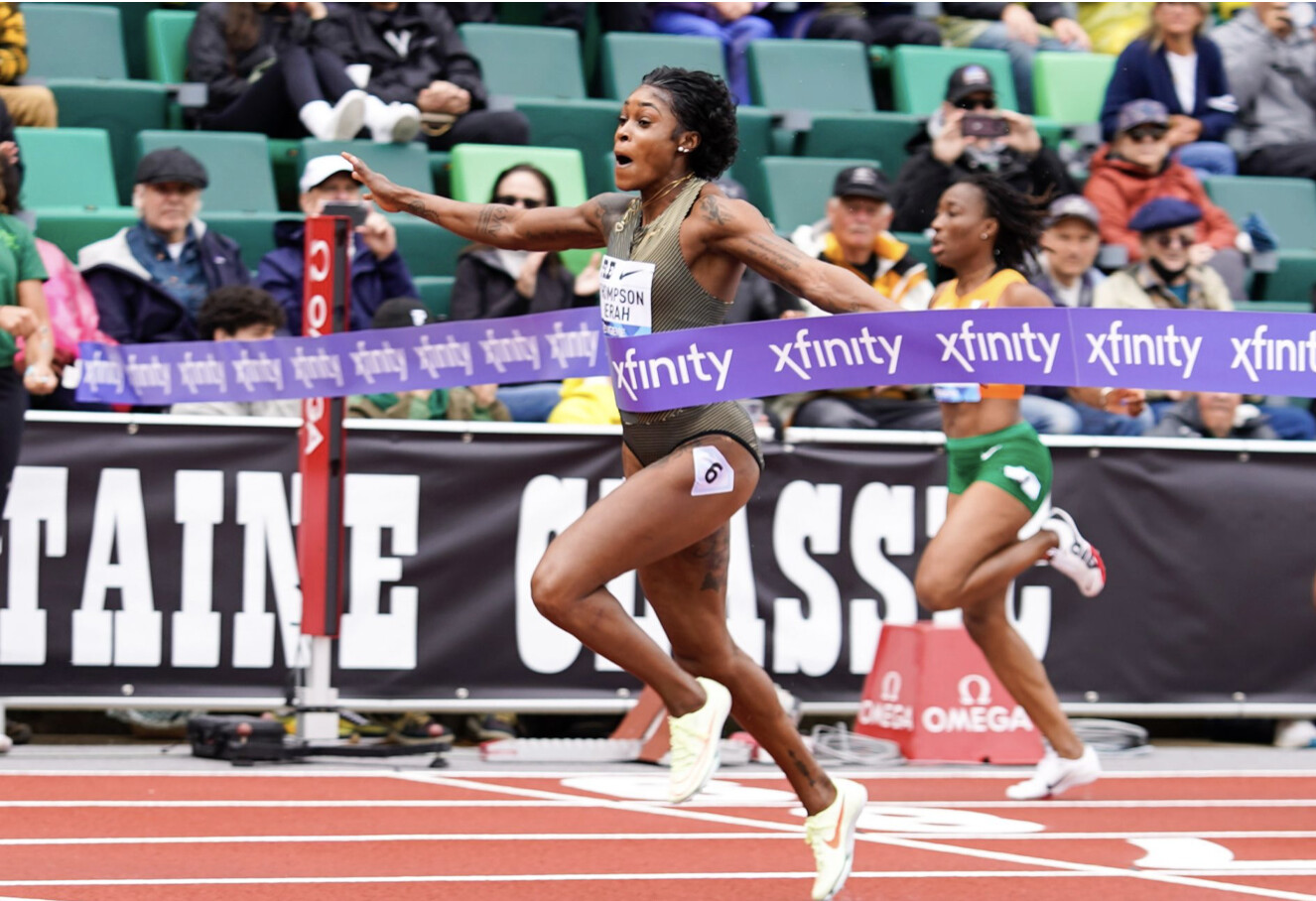
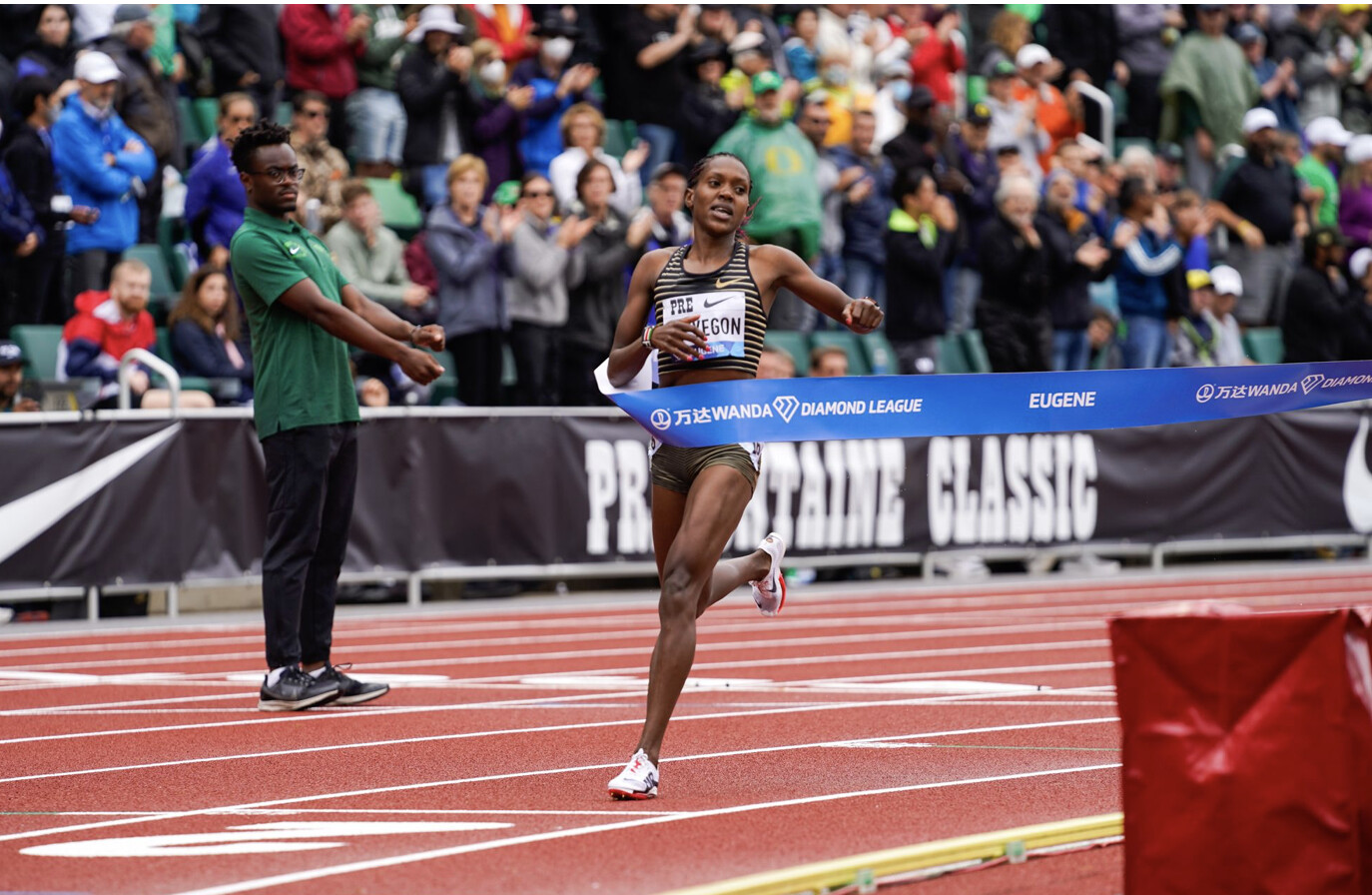
“I had zero expectation of what I could run today,” said Norman, who revealed he and coach Quincy Watts had gone “back to the basics” during their winter training. “Hard work and consistency with diet and training,” he said. “My motto this year has been that if it’s comfortable, it’s too easy – on the weight room or the track. Based on how I felt, there are a few areas I can improve on.”
Looking to next month’s US Championships and the World Athletics Championships Oregon22 on the same track in July, Norman said: “I’m going to train like I want to do something special, and when the time comes, the time comes.”
Kenya's Faith Kipyegon was equally peerless when taking the women’s 1500m in commanding fashion, the Olympic champion tracking chief rival Gudaf Tsegay until the final turn, at which point she blew by and came home a clear winner in a world lead and meeting record of 3:52.59. Tsegay got second in 3:54.21 with Canada’s Gabriela Debues-Stafford third in 3:58.62. “The race today gave me great morale that everything I’m doing is correct towards the World Championships – that’s my biggest fish and I hope for the best, for the gold medal,” said Kipyegon, who is “going to think about” a world record attempt at 1500m later in the summer. “I was not expecting (to run 3:52) when I saw the rain this morning, but I felt comfortable. It was good.”
USA's Ryan Crouser produced by far the standout performance in the field events, the Olympic shot put champion looking utterly peerless when launching a world-leading 23.02m effort in the second round. That left him well clear of long-time rivals Joe Kovacs (22.49m) and Tom Walsh (21.96m).
What made it more impressive is that Crouser did not use his full technique, but threw off a “static” starting position, which prior to today had never produced a 23-metre effort. Crouser said he usually throws 40-60cm farther when utilising his full technique.
“I thought 23 was possible but I thought I’d have to get into my full (technique) to do it,” said Crouser. “My best static ever was in the 22.90s. To throw a static PR, under a heavy load, without a taper, is a really good indicator of where I can be seven or eight weeks from now.” Berihu Aregawi turned in a superb solo performance to take the men’s 5000m in a meeting record and world lead of 12:50.05, coming home well clear of fellow Ethiopians Samuel Tefera (13:06.86) and Selemon Barega (13:07.30). Aregawi swept to the front in the third kilometre after the pacers stepped aside and the Ethiopian broke clear of the field, powering through to the final laps to a rapturous reception from the crowd, which historically loves displays of fearless distance running.
In the men’s 400m hurdles, Brazil’s Alison Dos Santos achieved another dominant performance, clocking a world-leading 47.23 to come home a distant winner ahead of USA’s Khalifah Rosser and Quincy Hall, who both clocked personal bests of 48.10.
“I’m happy with this, but I want more, I want to go faster,” said Dos Santos. “Me and (Rai) Benjamin never win against (Karsten) Warholm, and nobody wants to lose, but it’ll be hard for us to come up against him at the World Championships and win. He is the boss, the guy to beat, and for winning the final you need to run 45 (seconds) – everyone is so strong.”
Sprint queen Elaine Thompson-Herah once again asserted her supremacy with a comfortable win in the 100m, clocking 10.79 (0.7m/s) to beat Sha’Carri Richardson, who bounced back to form with a 10.92 clocking to edge Shericka Jackson, who was third in 10.92. Britain’s Dina Asher-Smith was fourth with 10.98.
“I’m happy to cross the line healthy and with the win,” said Thompson-Herah, who explained prior to the event that she’d been managing a niggle in training. “It got me ready for my championship in Jamaica next month.”USA’s Trayvon Bromell laid down a big marker ahead of next month’s US Championships by defeating his chief rivals in the 100m, pulling clear to take a comfortable win in 9.93 (-0.2m/s). Fred Kerley was next best with 9.98, while Christian Coleman faded from first at halfway to third at the finish, clocking 10.04 just ahead of Noah Lyles (10.05).
"I really just wanted to come out with the win as I knew the wind was iffy today," said Bromell. "There were some technical things I wanted to do better with but I just have to go back to the drawing board and try to fix it."
Olympic champion Jasmine Camacho-Quinn came from behind to score an impressive win in the 100m hurdles, a non-Diamond League event, the Puerto Rican clocking 12.45 into a slight headwind (-0.7m/s) with Nigeria’s Tobi Amusan second in 12.58 and USA’s Tonea Marshall third in 12.66.
“It was a little sloppy,” said Camacho-Quinn. “I hit my trail leg a couple of times and that slowed me up, but I’ll take it. I went 12.4 in these conditions.”
Jamaica’s Shelly-Ann Fraser-Pryce was a clear winner of the women’s 200m in 22.41 (0.8m/s), with USA’s Brittany Brown second in 22.74 and Anthonique Strachan of Bahamas third in 22.76.
Norway’s Jakob Ingebrigtsen re-asserted his supremacy in the Bowerman Mile, the Olympic champion breaking clear with a lap to run and coming home a comfortable winner in a world lead of 3:49.76, with Australia’s Ollie Hoare second in a PB of 3:50.65 and world champion Timothy Cheruiyot third in 3:50.77.
“It was a great race – I’m where I’m supposed to be,” said Ingebrigtsen, who will “for sure” double over 1500m and 5000m at the World Athletics Championships Oregon22. Looking towards the European Championships in Munich, he said he’d “love to do 800m, 1500m, steeplechase, 5km, 10km and marathon, but I don’t think that’s possible with the schedule.”
He will next race over 800m before competing at the Wanda Diamond League meeting in Oslo on 16 June. Britain’s Keely Hodgkinson utilised her typical sit-and-kick tactics to great effect to take the women’s 800m, the Olympic silver medallist powering clear of race leader Natoya Goule entering the home straight and holding off the late surge of world indoor champion Ajee Wilson to win in a world lead of 1:57.72, with Wilson second in 1:58.06 and Raevyn Rogers third in 1:58.44.
Olympic champion Athing Mu was a late withdrawal after contracting Covid-19, but Hodgkinson is looking forward to renewing their rivalry in July.
“It would have been good if she was here, but she’s going to be there at the World Champs and I’m sure we’ll have a good duel then – I look forward to racing her,” said Hodgkinson. “I felt really good, it was a bit windy out there but there was good competition, it was a good run. I can’t complain.”
Sweden’s Khaddi Sagnia unleashed a PB of 6.95m (1.0m/s) to take victory in the women’s long jump, with Nigeria’s Ese Brume second with 6.82m and USA’s Tara Davis third with 6.73m.
Norah Jeruto, the Kenyan-born athlete who now represents Kazakhstan, produced an impressive display to win the women’s 3000m steeplechase in 8:57.97, a world lead. Bahrain’s Winfred Mutile Yavi was close behind in second, clocking a PB of 8:58.71, while Ethiopia’s Mekides Abebe was third in 9:03.26. In the men’s 1500m, a non-Diamond League event, New Zealand’s Samuel Tanner took victory in a PB of 3:34.37 in front of Britain’s Neil Gourley, who clocked a PB of 3:34.85.
Italy’s Martina Caironi set a world record of 14.02 in the T63 women’s 100m, while in the men’s T62 400m, Germany’s Johannes Floors took the win in 48.13.
Login to leave a comment
Prefontaine Classic
The Pre Classic, part of the Diamond League series of international meets featuring Olympic-level athletes, is scheduled to be held at the new Hayward Field in Eugene. The Prefontaine Classicis the longest-running outdoor invitational track & field meet in America and is part of the elite Wanda Diamond League of meets held worldwide annually. The Pre Classic’s results score has...
more...Shelby Houlihan loses her final appeal
Two-time American record holder Shelby Houlihan, who is serving a four-year ban after failing a drug test in late 2020, has lost her final appeal to the Swiss Federal Tribunal. Houlihan will now have to serve the entirety of her ban and will be eligible to compete again in January 2025.
The news was announced on her Instagram. “I was told from the start it was a long shot,” Houlihan wrote. “The truth hasn’t won here and it’s devastating.” The 11-time U.S. champion on the track continues to maintain that she did not knowingly dope and that the ban is unfair.
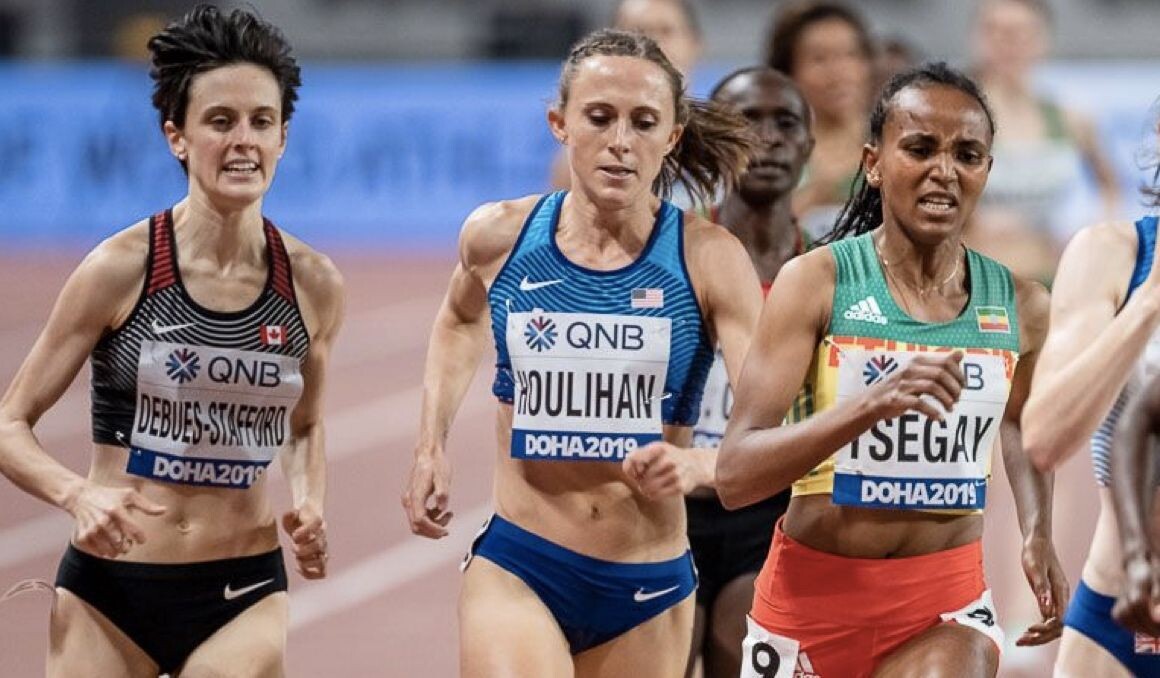
In December 2020 Houlihan tested positive for the steroid nandrolone, and in June 2021, the Athletics Integrity Unit (AIU) handed her a four-year ban from the sport. After the ban was announced, Houlihan claimed the positive result was due to contaminated meat from a burrito food truck consumed the night before she was tested.
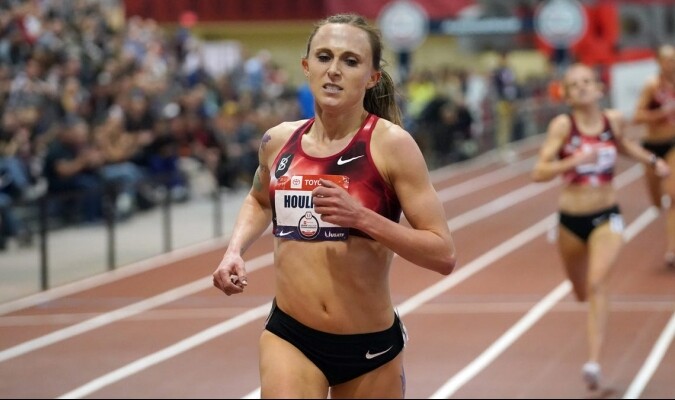
Houlihan appealed the ban and attempted to prove her innocence, but the Court of Arbitration for Sport (CAS) upheld the ruling against her, stating that “The Athlete’s explanation that the 19-NA in her sample resulted from her consumption of the meat of an uncastrated boar simply cannot be accepted. The explanation presupposes a cascade of factual and scientific improbabilities, which means that its composite probability is (very) close to zero.”
Houlihan launched a GoFundMe page to help pay her legal fees. In a final effort to have the ban overturned, she appealed to the high court of the Swiss Federal Tribunal in late 2021. Last week, the Tribunal made the decision to dismiss her appeal due to the lack of evidence.
Houlihan’s name no longer appears on the Bowerman TC website but is still a Nike athlete. Last month, Canada’s Gabriela DeBues-Stafford left Bowerman TC, after spending almost two years with the club, citing confusion around Houlihan’s presence and involvement with the club despite being banned.
by Marley Dickinson
Login to leave a comment
Athletics Canada names 18 athletes to World Indoor Championships team
On March 3, Athletics Canada announced the 18-member team that will represent Canada at the World Athletics Indoor Championships in Belgrade, Serbia from March 18-20. This team is made up of six men and 12 women who have successfully achieved the World Athletics Indoor standard in their event. Athletics Canada has chosen to send an experienced team, with 16 out of the 18 athletes selected having represented Canada on the world stage previously.
Toronto native and Bowerman Track Club member Gabriela DeBues-Stafford headlines the team, sitting at fifth in the World Athletics rankings over the 3,000m and first in the 5,000m. DeBues-Stafford has had a remarkable indoor season, breaking the Canadian indoor 3,000m and 5,000m records in back-to-back weekends. In Serbia, DeBues-Stafford will be among those contending for a medal in the women’s 3,000m.
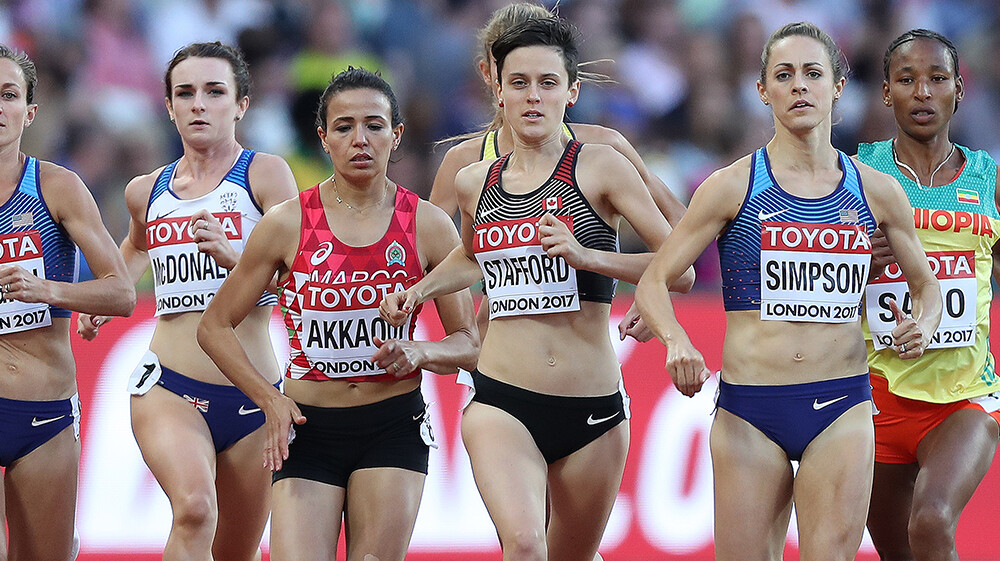
Canada’s 2021 Lou Marsh Award winner, Damian Warner, who won gold in the decathlon at the Tokyo Olympics, was also named to Team Canada, competing in the indoor heptathlon. Warner won silver at the 2018 World Indoor Championships in this event and he’ll be looking to upgrade that to gold in Serbia.
That was the only medal a Canadian brought home from in 2018. Team Canada’s head coach Glenroy Gilbert expects this year’s team to contend for high placings across all disciplines in Birmingham.
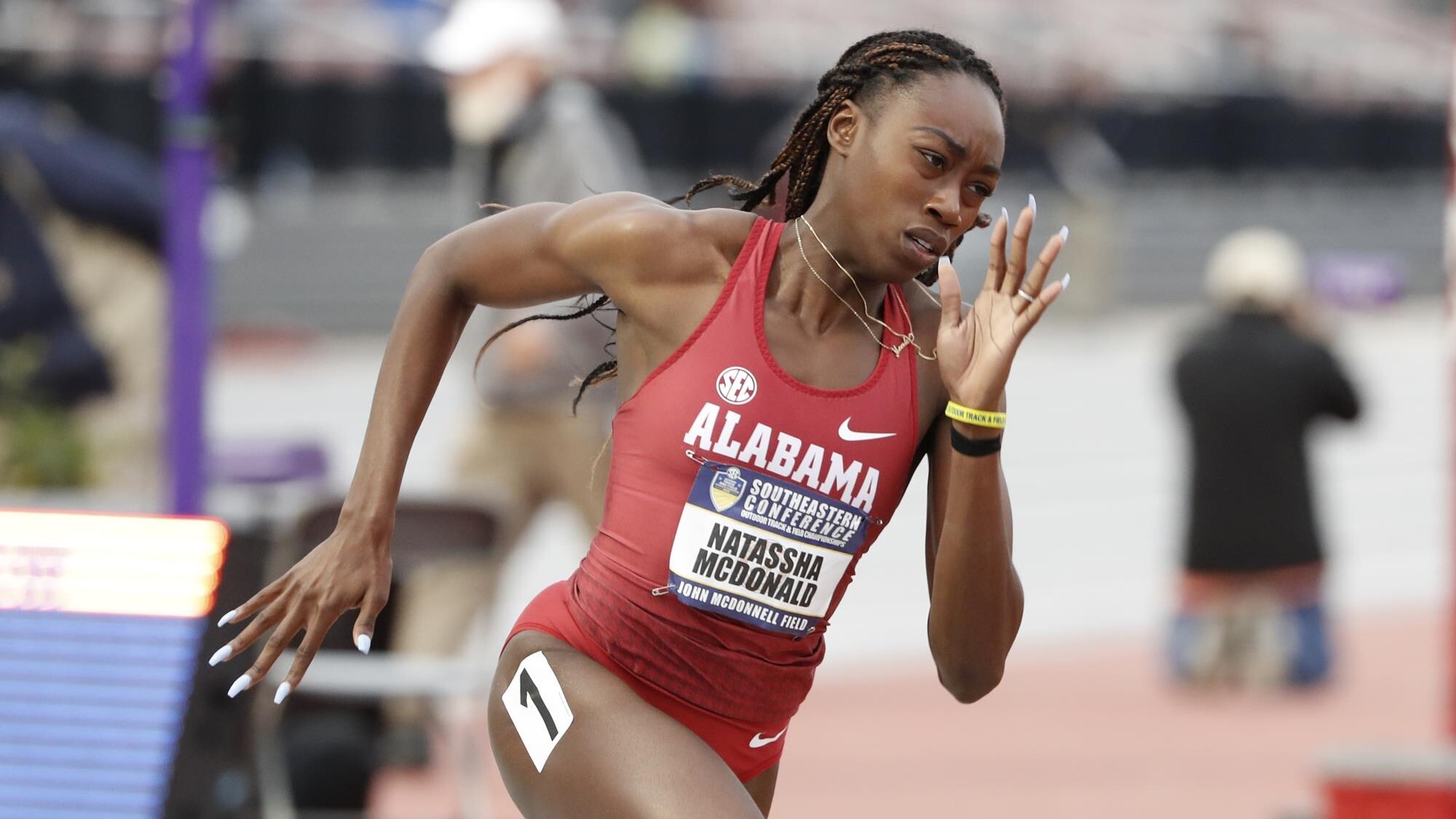
There are high expectations on what could be Canada’s best 4x400m women’s team ever, comprised of Natassha MacDonald, Lauren Gale, Kyra Constantine, Micha Powell and Sage Watson. The women’s 4x400m team finished fourth at the Tokyo Olympics and will be looking for redemption this time around in Serbia.
Indoor Worlds Team (information via Athletics Canada)
Athletes
Bolade Ajomale (Richmond Hill, Ont.) – Men’s 60 metres
Cameron Proceviat (Burnaby, B.C.) – Men’s 400 metres
Damian Warner (London, Ont.) – Men’s Heptathlon
Ehab El-Sandali (Toronto, Ont.) – Men’s 3,000 metres
Gabriela DeBues-Stafford (Toronto, Ont.) – Women’s 3,000 metres
John Gay (Kelowna, B.C.) – Men’s 3,000 metres
Julie-Anne Staehli (Lucknow, Ont.) – Women’s 3,000 metres
Kyra Constantine (Brampton, Ont.) – Women’s 4×400 metres
Lauren Gale (Ottawa, Ont.) – Women’s 4×400 metres
Lindsey Butterworth (North Vancouver, B.C.) – Women’s 800 metres
Lucia Stafford (Toronto, Ont.) – Women’s 1,500 metres
Madeleine Kelly (Pembroke, Ont.) – Women’s 800 metres
Marco Arop (Edmonton, Alta.) – Men’s 800 metres
Micha Powell (Toronto, Ont.) – Women’s 4×400 metres
Michelle Harrison (Saskatoon, Sask.) – 60 metres hurdles
Sage Watson (Medicine Hat, Alta.) – Women’s 4×400 metres
Sarah Mitton (North York, Ont.) – Shot put
According to Athletics Canada:
a second list of athletes who met the Athletics Canada indoor qualification standard in their respective events will be added to the team if they appear as “Qualified by Entry Standard” or “In World Rankings quota” on the March 9 World Athletics rankings list and the quota places remain open in their event.
The 2022 World Indoor Championships will kick off on March 18 and run until March 20.
by Marley Dickinson
Login to leave a comment
World Athletics Indoor Championships
World-Class Competition Lands in China: 2025 World Athletics Championships The global spotlight shines on China as it hosts the 2025 World Athletics Championships, bringing together the planet’s most elite runners, jumpers, and throwers. This prestigious event, organized by World Athletics, represents the pinnacle of track and field competition—where national pride, personal records, and world titles are on the line. ...
more...Grant Fisher (12:53.73) DESTROYS US 5,000 Record in Boston, Moh Ahmed (12:56.87) and Marc Scott (12:57.08) Break Canadian and British Records
As the runners were getting ready for the elite section of the men’s 5000 meters at the 2022 Boston University David Hemery Valentine Invitational on Saturday evening, we should have known we were in for a treat. After all, the slow heat had just been won in 13:05.
It’s crazy, when you think of it: Bowerman Track Club coach Jerry Schumacher had decided Woody Kincaid, the reigning US 10,000-meter champion, was not quite ready to mix it up with his BTC teammates in the fast section and Kincaid wound up running 13:05.56, at the time the second-fastest indoor 5,000m ever by an American.
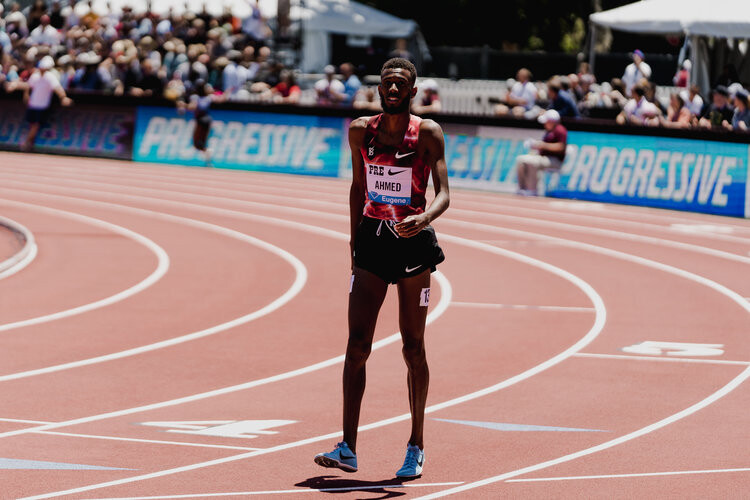
Just as crazy: Schumacher was kind of right. Because what we saw in the fast heat was the deepest 5,000-meter race ever contested on US soil, indoors or out.
Grant Fisher, a former high school phenom who won two Foot Locker titles and broke 4:00 in the mile while balancing soccer with running, delivered on his immense promise and ran 12:53.73 to win the race, smash Galen Rupp’s American indoor record of 13:01.26, and come within a whisker of Bernard Lagat’s American outdoor record of 12:53.60. He is now the fifth-fastest human ever at 5,000 meters indoors, one spot ahead of a guy by the name of Eliud Kipchoge.
Fisher’s Bowerman teammate Moh Ahmed, the Olympic silver medalist last year, was next across, running 12:56.87 to break his own Canadian indoor record of 13:04.60. Marc Scott completed the BTC national record sweep in third, and like Ahmed, Scott lowered his own European indoor record, taking it from 13:08.87 to 12:57.08.
In the process, Scott became the first man born in the United Kingdom – and just the third born in Europe – to break 13:00, indoors or out. The race marked the first time that three men broke 13:00 in the same race indoors (only once before had even two done it in the same race).
The times were so fast up front that would-be historic performances were relegated to also-ran status. Emmanuel Bor ran the second-fastest time in US
indoor history (under Rupp’s previous AR) but was only 4th (13:00.48). Sam Atkin of Great Britain and Jonas Raess of Switzerland both ran faster than the previous European indoor record but had to settle for 5th (Atkin in 13:03.64) and 6th (Raess in 13:07.95).
Florida State’s Adriaan Wildschutt of South Africa ran the second-fastest NCAA time ever indoors and third-fastest under any conditions – 13:09.20 – setting a national indoor record in the process and he was only 5th – in the B heat. Notre Dame’s Dylan Jacobs ran 13:14.04, #4 on the NCAA all-time indoor list and an American indoor collegiate record.
It was sheer madness.
In the main race, the early pacing was good, with 2020 US indoor 1500 champ Josh Thompson and 27:20 man Zouhair Talbi of Morocco taking the field through 3k in 7:53.51, but the real racing didn’t get going until just under a mile to go, when Atkin signaled for Fisher to pass him, knowing he could no longer hold the pace Fisher wanted to run.
From there, Fisher conducted a symphony of pain on the BU track, stretching the field out until Atkin, Scott, Ahmed, and finally Bor had dropped, leaving Fisher all alone for the final 400 as the crowd roared him into the history books. His last four 400m splits: 60.00, 58.95, 59.91, 58.74, good for an otherworldly 3:57.56 final 1600.
Fisher’s performance, just like almost every elite distance performance in the year 2022, must be placed into the context of its era. Earlier in the day on the same track, Notre Dame’s Yared Nuguse, the Olympian and 2019 NCAA 1500 champ, broke Alistair Cragg’s 7:38.59 indoor collegiate record which had stood since 2004. And last night, Gabriela DeBues-Stafford and Elise Cranny set dueling Canadian/American records, Cranny taking 14 seconds off Shalane Flanagan’s 14:47.62 AR.
Fisher and Cranny’s talents have long been known, and they are undoubtedly great runners. Yet between them, they own a grand total of one NCAA and one US title. That they could annihilate national records established by two of the greatest distance runners in American history is yet more evidence that we have entered a new age of distance running ushered in by super shoes, one in which the standards must be (and are being) adjusted.
by Let’s Run
Login to leave a comment
Ontario student athletes petitioning government to open training facilities
In the pre-pandemic era, the beginning of January marked a return to the OUA and OCAA season for many student-athletes, but on Jan. 3, the gov’t of Ontario announced new province-wide restrictions in response to the spread of the Omicron variant of COVID-19, placing a ban on all non-elite sports until the end of January. Athletes across the province are signing a petition for the provincial government to lift restrictions on university and collegiate sports in Ontario to be defined as an “elite-level” sport.
The government’s decision stated that ‘elite-level sports’ can continue to play – the Toronto Six and Toronto Raptors can play, Olympians and Paralympians can continue to prep for Beijing. But, OUA and OCAA coaches and student-athletes are left off the playing field. The current restrictions in Ontario prohibit training in university facilities, as well as indoor meets until at least Jan. 27
t the Tokyo 2020 Olympic Games, there were 37 current and past OUA athletes who represented Team Canada (incl. runners Madeleine Kelly, Lucia Stafford, Gabriela DeBues-Stafford, Julie-Anne Staehli and Alicia Brown).
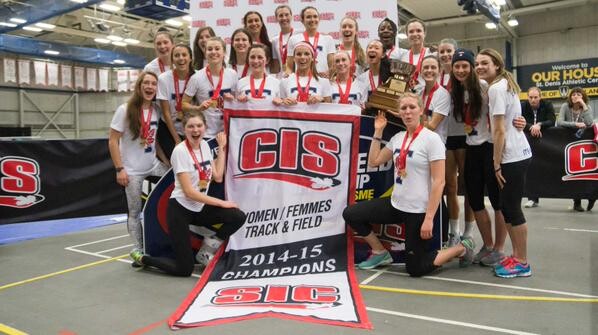
Before Christmas, Ontario University Sport (OUA) announced they were going to halt all winter competitions due to the ongoing spread of Omicron until Jan. 24, but at that time, athletes were still allowed to practice using university facilities depending on the university’s regulations surrounding Omicron.
The recent announcement leaves OUA athletes without a place to train.
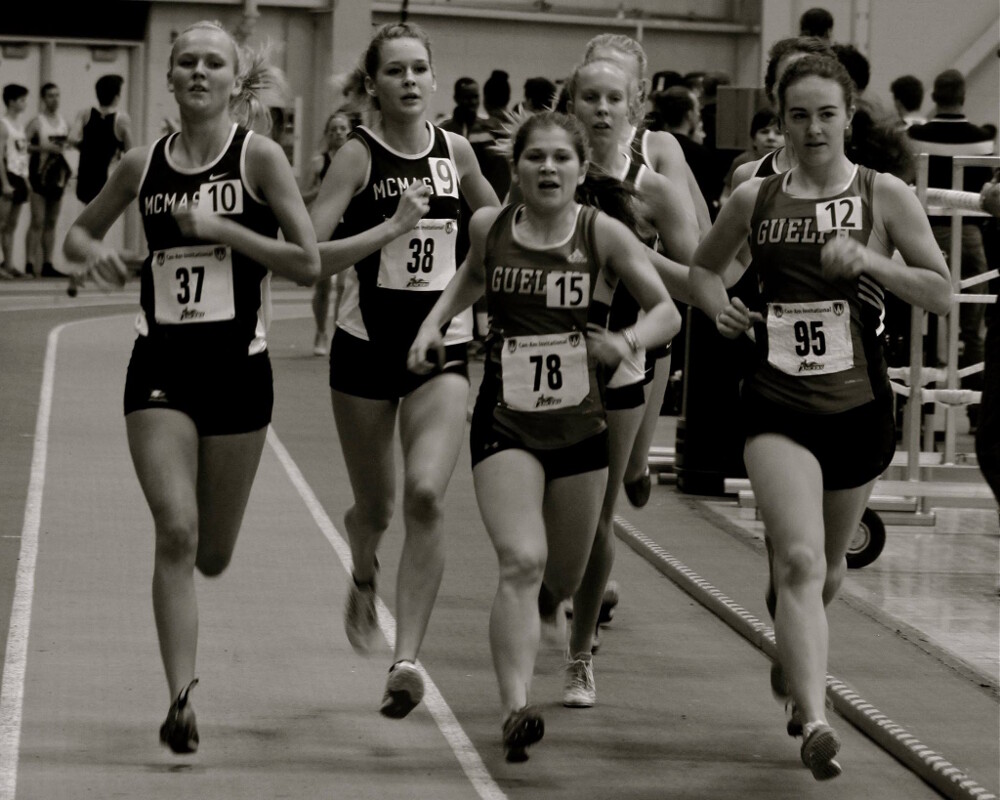
Andrew Davies is an elite-level distance runner with the McMaster Marauders Track & Field team, who has represented Canada at the junior level. “Since we don’t have a useable indoor facility at McMaster, our team was commuting to Guelph once a week to use an indoor track,” Davies says. “The recent restrictions from the government have left us without options in preparation for the indoor season.”
Several OUA-governed indoor track and field meets were supposed to take place in January but have since been cancelled. Many university athletic departments are pushing for their facilities to be opened for varsity teams.
For some senior student-athletes, this season marks their last year of OUA eligibility. “It’s been difficult to plan for races with the uncertainty of the season,” Davies says. “If there were to be further cancellations into February our team would look into options of entering races south of the border.”
The petition for the Ontario provincial government to resume sport has currently gathered over 2,000 signatures.
by Marley Dickinson
Login to leave a comment
Eugene will play host rematches betwen olympic medalists at the Prefontaine Classic
Dozens of medal winners from the recent Tokyo Olympic Games will be back in action at the Wanda Diamond League meeting in Eugene when Hayward Field hosts the Prefontaine Classic on August 21.
Based on the announcements made so far by the meeting organizers, five events will feature a full set of Olympic medalists from Tokyo.
Double Olympic champion Sifan Hassan headlines the women’s 5000m field and she’ll take on two-time world champion Hellen Obiri and world indoor 1500m record-holder Gudaf Tsegay, the silver and bronze medalists in Tokyo over 5000m.
All three medalists from the men’s 5000m will also be in action as Uganda’s Joshua Cheptegei, Canada’s Moh Ahmed and USA’s Paul Chelimo clash over two miles.

Teenage stars Athing Mu and Keely Hodgkinson, the top two finishers in the 800m in Tokyo, will be back in action over two laps, along with world and Olympic bronze medallist Raevyn Rogers, world champion Halimah Nakaayi, Britain’s Jemma Reekie, Jamaica’s Natoya Goule and USA’s Ajee Wilson and Kate Grace.
World record-holder and two-time Olympic champion Ryan Crouser will look to maintain his winning streak in the shot put when he takes on world champion Joe Kovacs and 2017 world champion Tom Walsh. Brazil’s Darlan Romani and US duo Darrell Hill and Payton Otterdahl are also in the line-up.
Jamaican sprint stars Elaine Thompson-Herah, Shelly-Ann Fraser-Pryce and Shericka Jackson – who filled the 100m podium in Tokyo – will face USA’s Sha’Carri Richardson and Marie-Josee Ta Lou of the Ivory Coast.
The men’s 100m, meanwhile, features Olympic silver and bronze medalists Andre De Grasse and Fred kerley, along with world indoor bronze medallist Ronnie Baker, 400m specialist Michael Norman and African record-holder Akani Simbine.
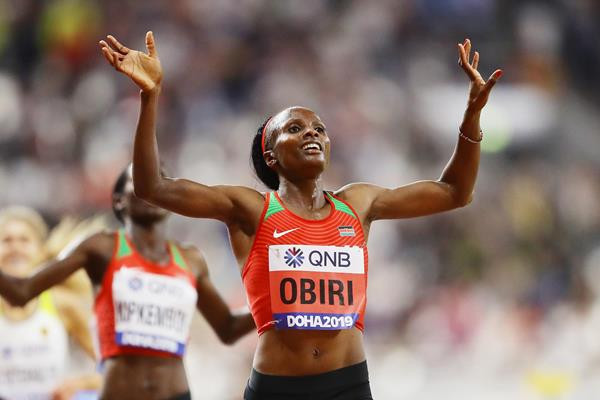
Two-time Olympic champion Faith Kipyegon will once again line up against Olympic silver medallist Laura Muir and Canadian record-holder Gabriela DeBues-Stafford, while world champion Timothy Cheruiyot will clash with Olympic champion Jakob Ingebrigtsen in the men’s Bowerman mile.
In the women’s steeplechase, world champion Beatrice Chepkoech takes on world leader Norah Jeruto Tanui, Olympic silver medalist Courtney Frerichs and 2017 world champion Emma Coburn.
Other global stars confirmed so far include world 400m hurdles champion Dalilah Muhammad, Olympic triple jump champion Pedro Pablo Pichardo and world indoor triple jump record-holder Hugues Fabrice Zango.
by World Athletics
Login to leave a comment
Prefontaine Classic
The Pre Classic, part of the Diamond League series of international meets featuring Olympic-level athletes, is scheduled to be held at the new Hayward Field in Eugene. The Prefontaine Classicis the longest-running outdoor invitational track & field meet in America and is part of the elite Wanda Diamond League of meets held worldwide annually. The Pre Classic’s results score has...
more...Kenyan Faith Kipyegon outkicks Hassan for Olympic 1,500m gold, sets Olympic record
On another hot, humid night in Tokyo, the match-up we’ve all been waiting for finally took place: defending Olympic 1,500m champion Faith Kipyegon of Kenya and the 5,000m gold medalist and world champion Sifan Hassan, who was attempting the 1,500m, 5,000m and 10,000m triple crown, went head-to-head over the metric mile, but it was the U.K.’s Laura Muir who got between them, setting a national record of 3:54.50, while Kipyegon took home the gold in a new Olympic record of 3:53.11. Hassan had to settle for bronze, in 3:55.86.
Canadian track fans had their eyes on Toronto’s Gabriela DeBues-Stafford, who was competing in her first-ever Olympic final. She did not make it out of the heats five years ago in Rio, but this time around was a potential challenger for a medal. She ran a brave race, going out strong to lead the pack through the first 300m. Hassan took over, to bring the pack through the first lap in 62 seconds, while Stafford stuck with the lead group to stay in medal contention.
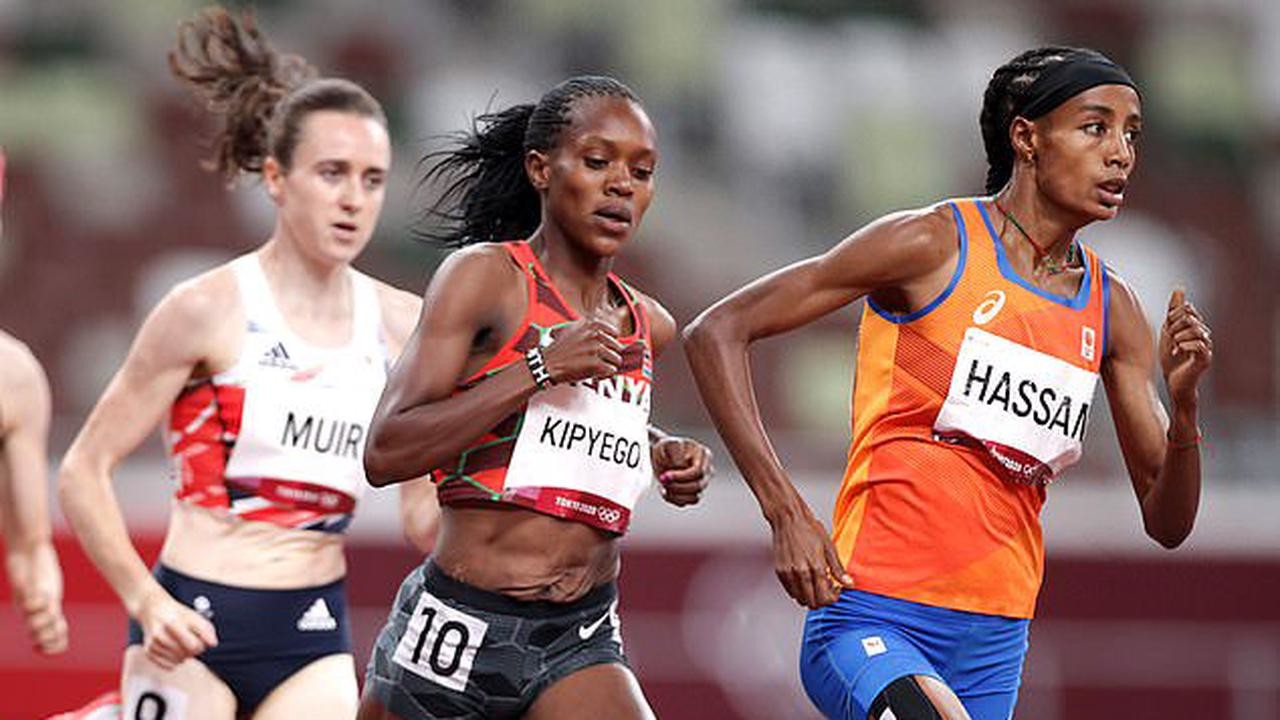
She looked strong coming into the bell lap, but in the last 300m Kipyegon kicked up the pace and DeBues-Stafford began losing touch with the top three runners, ending up in fifth in 3:58.93 behind Ethiopia’s Freweyni Gebreezibeher, a 20-place improvement from her Olympic debut.
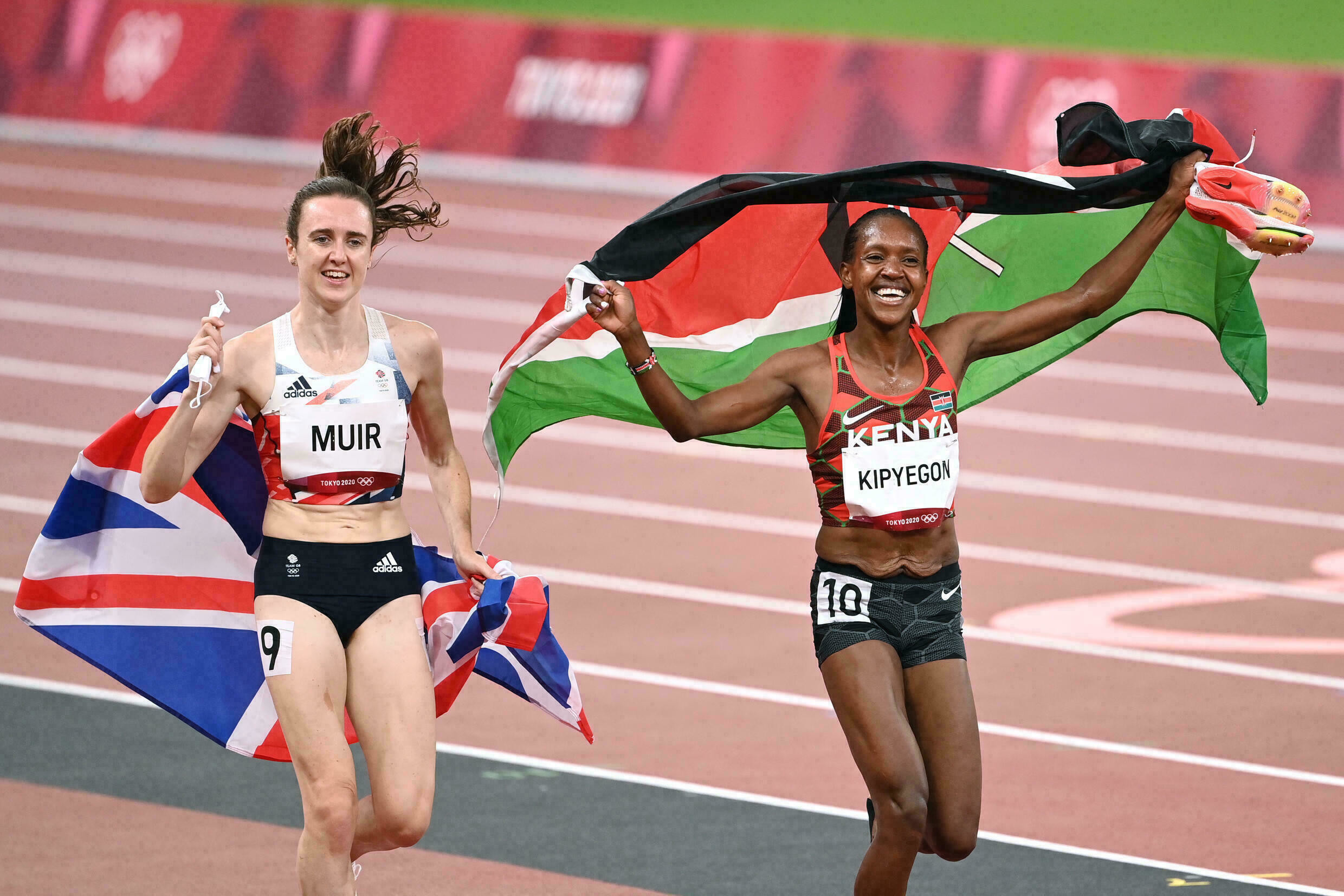
While everyone was expecting the fight for gold to be between Kipyegon and Hassan, it was Muir who was the (delightful) surprise of the night. The U.K. runner ran the race of her life, passing Hassan in the final 200m to take the silver medal in a new personal best and national record.
Hassan’s third-place finish means she will not accomplish the unprecedented 1,500m, 5,000m and 10,000m triple crown, but she still has a chance of winning three medals of different colours, with the 10,000m final taking place on Saturday.
by Brittany Hambleton
Login to leave a comment
Canada names 57-strong team for Tokyo
World medallists Andre De Grasse and Damian Warner are among the 57 athletes selected for Canada’s team for the Tokyo Olympic Games.
De Grasse claimed three of Canada’s six medals at the Rio Games in 2016, securing 200m silver and 100m bronze, while also forming part of the bronze medal-winning men’s 4x100m team. Warner, meanwhile, added Olympic decathlon bronze to his two world medals and went on to claim another in Doha in 2019.
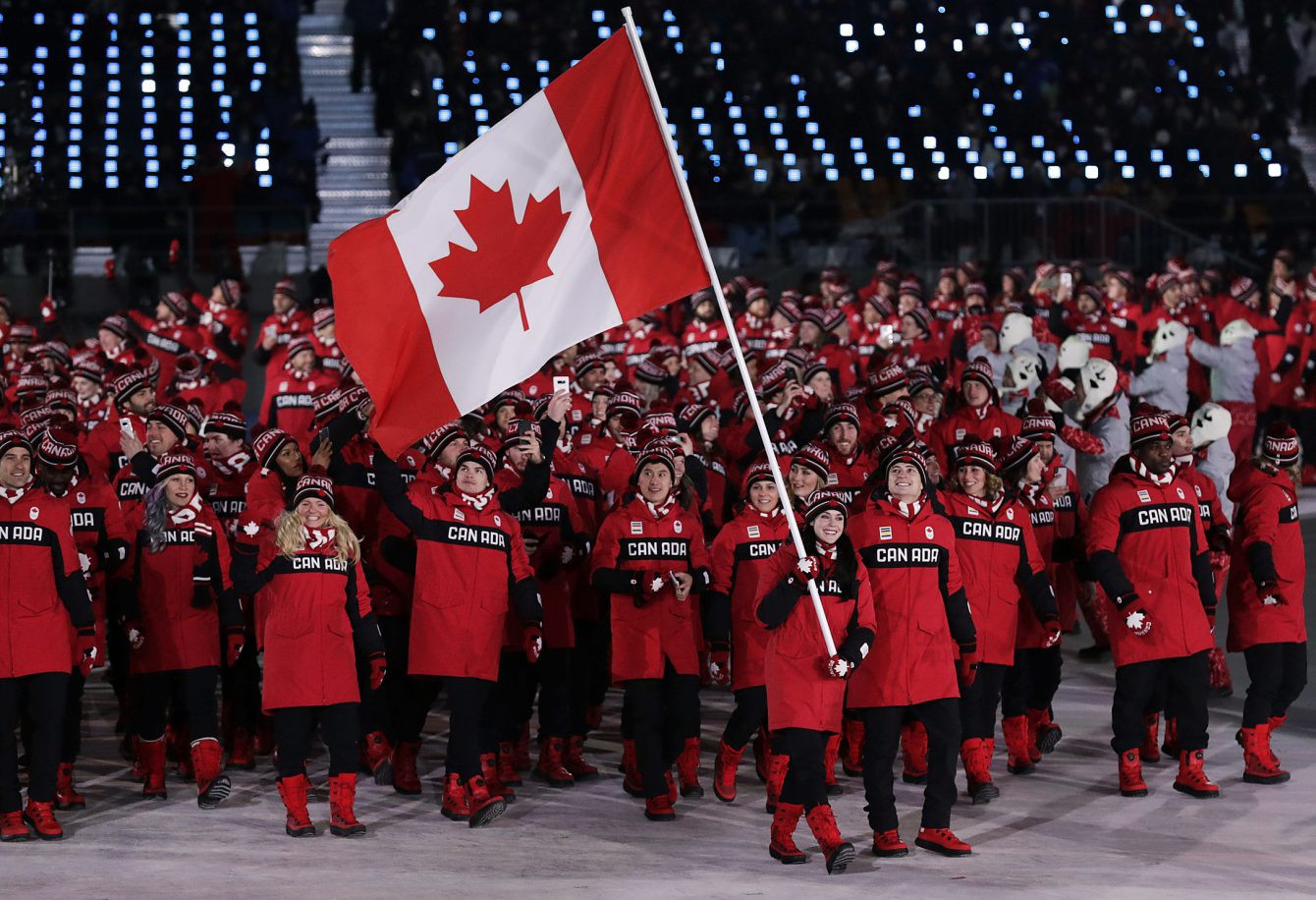
“It’s always an honour to represent my country on the world stage,” said De Grasse. “I’m really proud and excited to be going to my second Olympics Games. I look forward to making Canada proud.”
Warner, who heads to Tokyo as the top-ranked athlete in the men’s decathlon, said: “I’m really excited to go to Tokyo. It’s crazy for me to think that I went to the Olympics in 2012, 2016 and now I’m getting ready for my third Olympic Games.
“I couldn’t be more honoured to represent Team Canada and to go over to Tokyo with this talented group. I will have Pierce (LePage) with me in the decathlon, which will be awesome to have a teammate in the same competition. I’m just really looking forward to going over there and competing.”
Among those joining them in Tokyo will be 2016 Olympic 800m fourth-placer Melissa Bishop-Nriagu, Mohammed Ahmed, Gabriela DeBues-Stafford, Evan Dunfee and Sage Watson.
Malindi Elmore returns to Olympic Games action 17 years after she represented Canada in the 1500m in Athens, with the 41-year-old having broken the Canadian marathon record with 2:24:50 last year to achieve her place in the 26.2-mile event.
WOMEN
100m: Khamica Bingham, Crystal Emmanuel
200m: Crystal Emmanuel
400m: Kyra Constantine, Natassha McDonald
800m: Melissa Bishop-Nriagu, Lindsey Butterworth, Madeleine Kelly
1500m: Gabriela DeBues-Stafford, Natalia Hawthorn, Lucia Stafford
5000m: Andrea Seccafien, Julie-Anne Staehli, Kate Van Buskirk
10,000m: Andrea Seccafien
Marathon: Malindi Elmore, Dayna Pidhoresky, Natasha Wodak
3000m steeplechase: Alycia Butterworth, Genevieve Lalonde, Regan Yee
400m hurdles: Noelle Montcalm, Sage Watson
Pole vault: Anicka Newell, Alysha Newman
Long jump: Christabel Nettey
Shot put: Brittany Crew, Sarah Mitton
Javelin: Elizabeth Gleadle
Hammer: Camryn Rogers, Jillian Weir
Heptathlon: Georgia Ellenwood
4x400m: Alicia Brown, Kyra Constantine, Lauren Gale, Natassha McDonald, Noelle Montcalm, Madeline Price, Sage Watson
MEN
100m: Bismark Boateng, Andre De Grasse, Gavin Smellie
200m: Aaron Brown, Andre De Grasse, Brendon Rodney
800m: Marco Arop, Brandon McBride
5000m: Mohammed Ahmed, Lucas Bruchet, Justyn Knight
10,000m: Mohammed Ahmed
Marathon: Trevor Hofbauer, Cameron Levins, Ben Preisner
50km race walk: Mathieu Bilodeau, Evan Dunfee
3000m steeplechase: John Gay, Matthew Hughes
High jump: Django Lovett, Michael Mason
Shot put: Timothy Nedow
Decathlon: Pierce LePage, Damian Warner
4x100m: Bolade Ajomale, Jerome Blake, Bismark Boateng, Aaron Brown, Andre De Grasse, Brendon Rodney, Gavin Smellie
by World Athletics
Login to leave a comment
2016 Olympic steeplechaser Colleen Quigley announced that she was leaving Bowerman Track Club, and has finally revealed that she will be training under former FSU coach, Josh Seitz
In a turn of events that surprised many in the running community, American Olympian Colleen Quigley announced on February 4 that she is leaving the Bowerman Track Club, where she’s trained for the last five years.
The 28-year-old, who competed in the 3,000m steeplechase at the 2016 Olympics in Rio, will now be coached by Josh Seitz, who worked with her when she attended Florida State University (FSU).
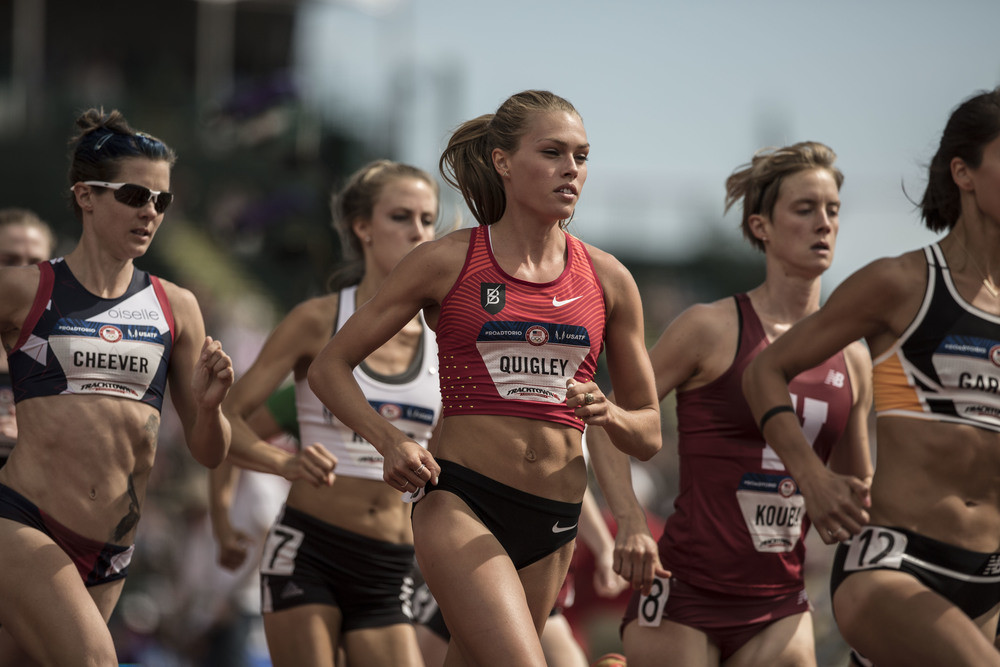
She announced that she would be leaving the BTC on her Instagram page. In a heartfelt post, she spoke about helping her coach, Jerry Schumacher, recruit more women to the team, which, at the time Quigley joined, consisted only of three other women, including Shalane Flanagan, Emily Infeld and Sammy Silva. Since then, the BTC women’s squad (affectionately named the ‘Bowerman Babes’) has grown into one of the most dominant groups of female distance runners in the country.
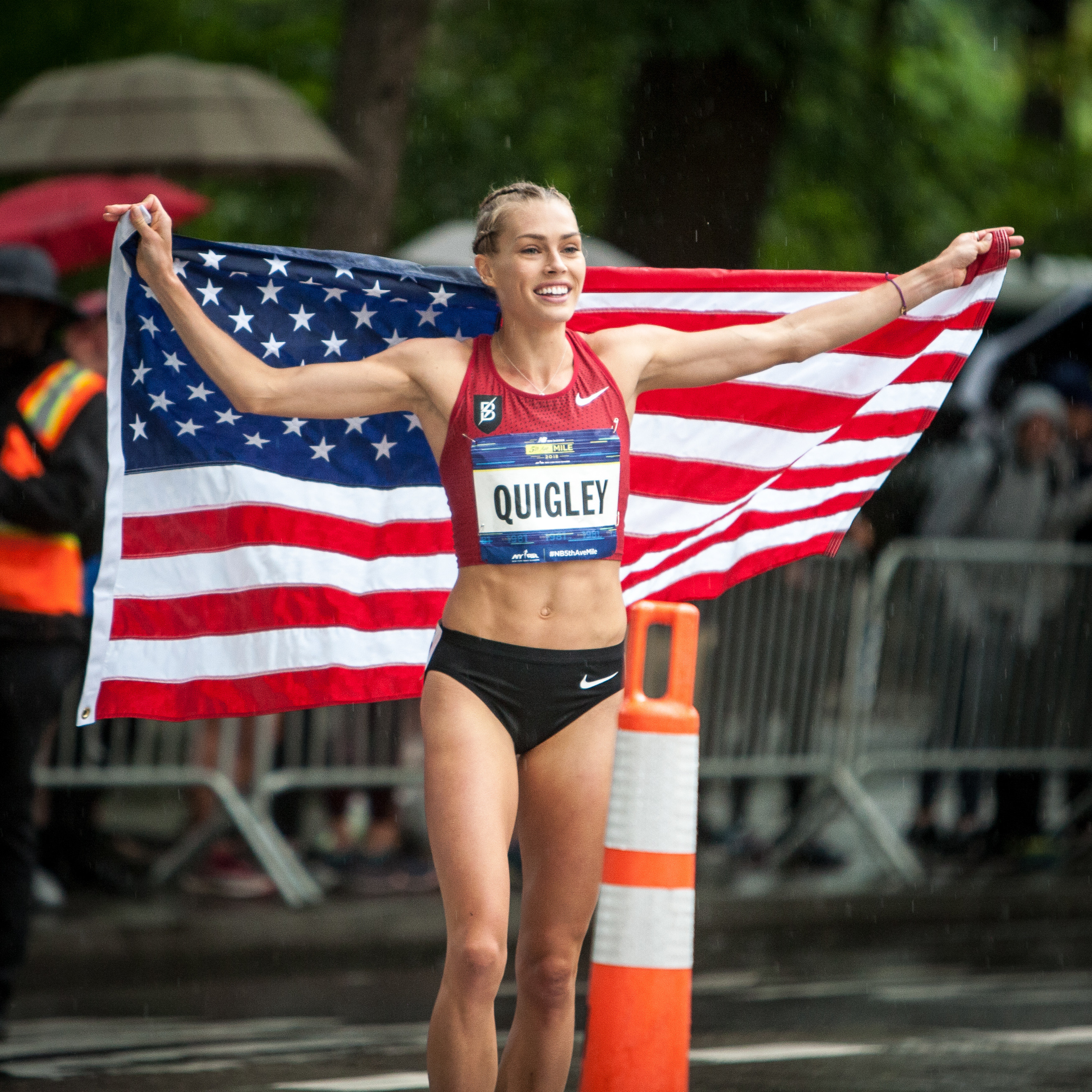
Quigley also wrote an ‘Open Letter to the BTC’ on her website, in which she described what the team has meant to her over the last several years, and gave special shout-outs to many of her teammates and coaches.
"BTC, you were the perfect place for a young athlete fresh out of college to land,” she wrote. “If going pro had meant training alone at age 22, I don’t think I ever would have made it. You gave me teammates and coaches who supported me and my goals.”
In an Instagram Live on Thursday, Quigley finally announced that her new coach would be Seitz, who is currently the assistant cross country and distance coach at Portland State University, where he has been coaching since 2017. According to his Portland State profile, in his four years on staff, he has helped a few steeplechase athletes set school records, and has led one steeplechaser to two podium finishes at the Big Sky Outdoor Championships.
Quigley´s teammate Kate Grace also announced that she would be leaving the BTC and will be heading to Colorado to train with Emma Coburn on Team Bosshard. There have been several changes to the Bowerman Track Club over the last year, with Gabriela Debues-Stafford, Sinclaire Johnson and Amos Bartelsmeyer joining the squad, and Ryan Hill, Andrew Bumbalough, Grace and Quigley leaving. Quigley has not yet announced any new sponsorship deals.
by Brittany Hambleton
Login to leave a comment
Canadian Lucia Stafford breaks U23 1,000m Canadian record
On Sunday evening, Lucia Stafford broke a nearly 40-year-old record, running a 2:38.70 1,000m at Birchmount Stadium to break Glenda Reiser’s record of 2:41.4 which she ran in August 1973. The run was planned as a record attempt, and since it was officially timed, is ratifiable as a Canadian record. She was paced by older sister Gabriela DeBues-Stafford, who recently announced that she’s joining the Bowerman Track Club this fall.
Stafford is coming off of a killer season, winning U Sports cross-country in 2019, running a strong indoor season in 2020 and now setting her third Canadian U23 record (she already owns the 1,000m and 1,500m indoors). Stafford’s 2019 and 2020 success is well deserved, as she struggled with Graves’ disease for a number of years leading up.
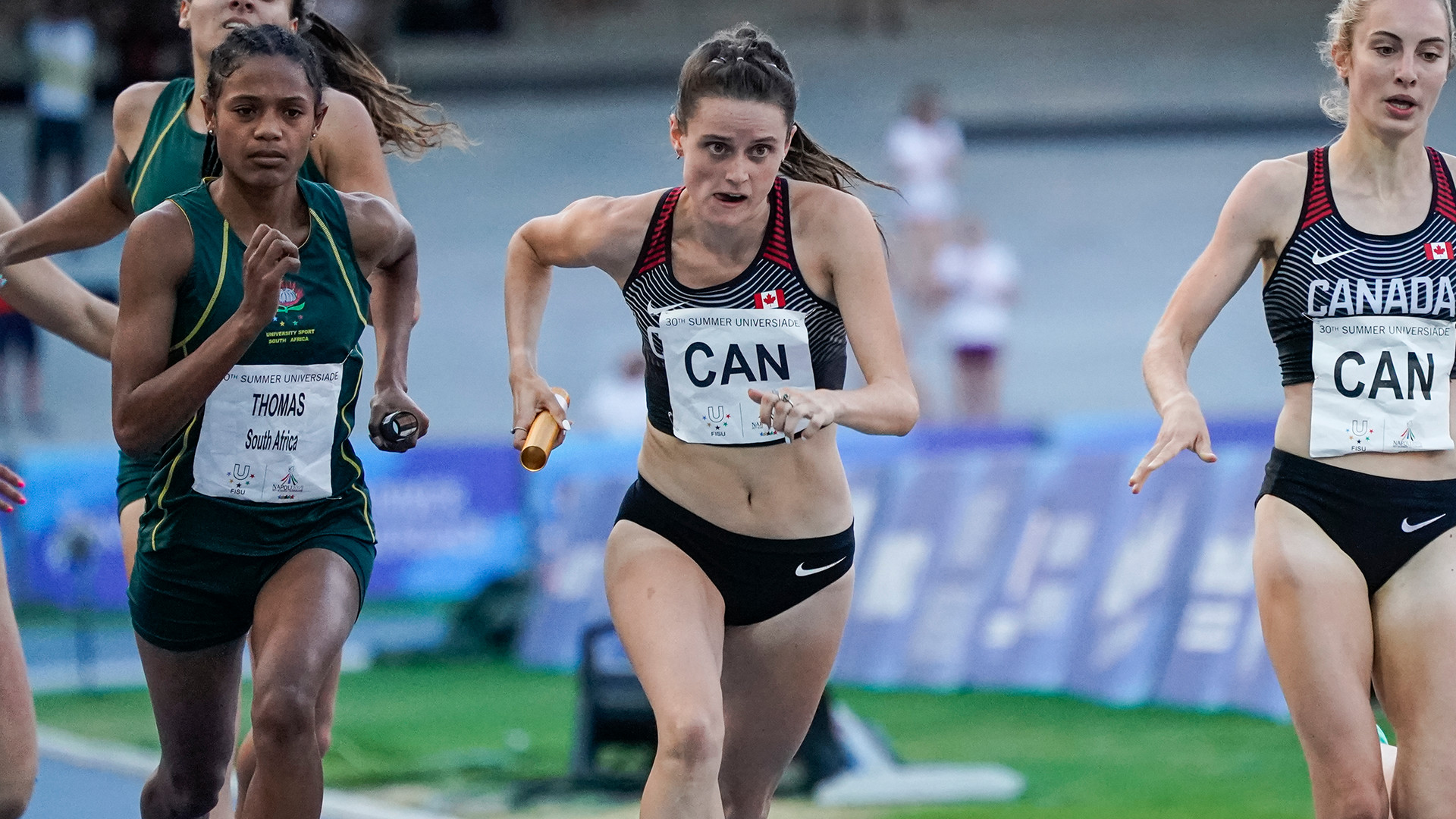
In 2018, the runner had a low-key season, and when she was racing, her performances weren’t as strong as in previous years. Some thought she was experiencing a plateau, not uncommon for someone who’s been so dominant for so long, but this wasn’t the case. In 2018, Stafford was undergoing treatment for an autoimmune disorder that causes an overactive thyroid. Since partially eradicating her thyroid gland, Stafford feels like herself again and is back running the way she wants to be.
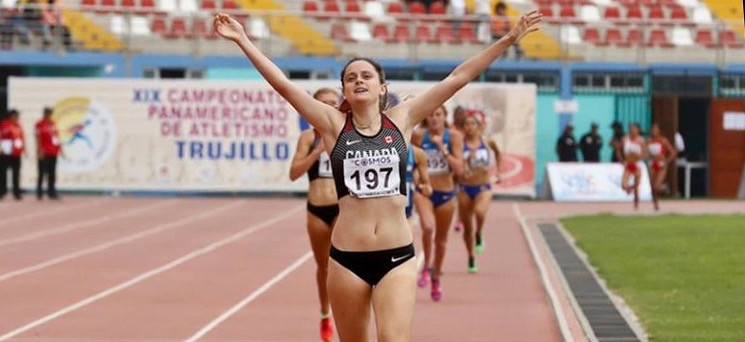
In a summer with very little on the calendar, scheduling time trials and record attempts is keeping runners motivated. Despite missing out on international competition, Stafford is among the many runners knocking out impressive times on their own.
Others impressive results from the weekend:
Out west, the impressive middle distance results keep flowing in. This week, 2018 Canadian 800m champion Lindsey Butterworth ran a huge personal best in the 1,500m, running under 4:10 for the first time to finish in 4:07. In other west coast results, Natasha Wodak also had a great run to hit a personal best in the 3,000m in 9:00. Finally, John Gay broke four minutes in the mile for the first time, just sneaking under the wire to finish in 3:59.
by Madeleine Kelly
Login to leave a comment
The Canadian Olympic committee and Own the Podium are looking to help fund a safe return to training for the country's elite athletes
The Canadian Olympic and Paralympic committees (COC and CPC) and Own the Podium (OTP) have announced a $5 million investment for a phased return to high-performance sport. In a conference call on Monday, representatives from each of these organizations discussed this investment, where the money might be applied and their hopes for elite Canadian athletes and Olympic hopefuls as they slowly work back toward their normal training plans and routines.
David Shoemaker, CEO of the COC, said, “Just as public health was our North Star when Canadian athletes decided to stop training back in March, public health will remain our North Star as we begin a phased-in approach to return to sport.” The COC, CPC and individual National Sport Organizations (NSOs) will “listen closely to medical experts” as athletes, coaches and teams resume training across the country, Shoemaker said.
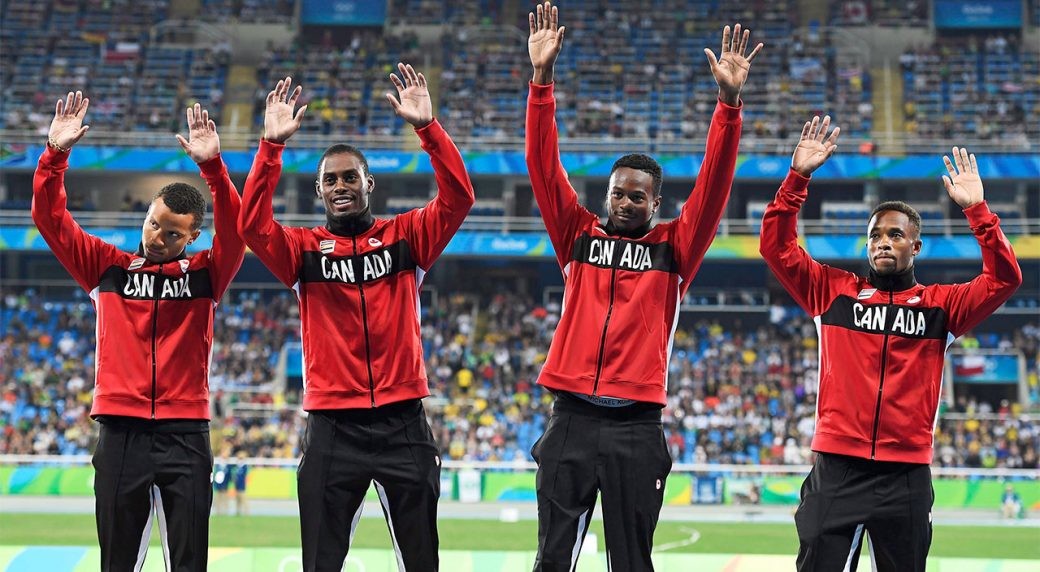
“We want to make sure that our athletes are returning to training in a way that’s not just safe for them, but so it’s safe for their families and safe for their communities.”

CEO of OTP Anne Merklinger said athletes’ return to sport “will vary greatly” depending on whether they compete in indoor or outdoor sports. “There’s a vast difference in the protocols that need to be followed in indoor sports, outdoor sports, individual sports and team sports,” she said.
The COC, CPC and OTP representatives on the conference call didn’t say where the $5 million would be allocated. There are almost 60 Olympic and Paralympic sports, and Shoemaker said a “Return to Sport Task Force” will decide which NSOs will receive money and how much they will each get.
“The Return to Sport Task Force recognizes that the nearly 60 sports we compete in in Canada have very different needs,” Shoemaker said. “We’re going to take full guidance from the medical experts and the sport experts to find out how to best optimize the $5 million investment.”
Shoemaker went on to say the money—which has been funded from other unspecified COC and CPC programs—will be prioritized and focused on the organizations’ “greatest need,” which he said is “podium potential.”
It’s unfortunate that NSOs with medal hopefuls may be the sports that receive the bulk or all of the $5 million investment, but it makes sense. With Canadians competing in nearly 60 sports across the Olympics and Paralympics, $5 million isn’t that much money. This is why the COC will be dedicating this investment to a select few, like those medal contenders, rather than spreading it out across dozens of sports for thousands of athletes. If this is the route the Return to Sport Task Force takes, that’s good news for track athletes like Andre De Grasse, Gabriela DeBues-Stafford and Mohammed Ahmed, all of whom are serious threats for big performances at next year’s Tokyo Olympics.
by Ben Snider-McGrath
Login to leave a comment
Defending champion, International Medalists and National Record-Holders to Headline Women’s NYRR Wanamaker Mile
Defending champion and world championship medalist Konstanze Klosterhalfen of Germany, former NCAA champion Elinor Purrier, Canadian record-holder Gabriela DeBues-Stafford, and Pan American Games champion Nikki Hiltz of the United States will lead the NYRR Wanamaker Mile women’s field at the 113th NYRR Millrose Games on Saturday, February 8 at The Armory’s New Balance Track and Field Center.
The signature event at the NYRR Millrose Games has taken place every year on the women’s side since 1976 and will be broadcast live nationally on NBC for the fourth consecutive year from 4:00 p.m.-6:00 p.m. ET, in addition to streamed live online on NBC Sports Gold.
“This year’s women’s NYRR Wanamaker Mile will feature some of the sport’s biggest rising international stars, including Konstanze, Elinor, Gabriela, and Nikki, who will headline a world-class field,” said NYRR Millrose Games Meet Director Ray Flynn. “We are excited to fill The Armory and cheer on these tremendous athletes.”
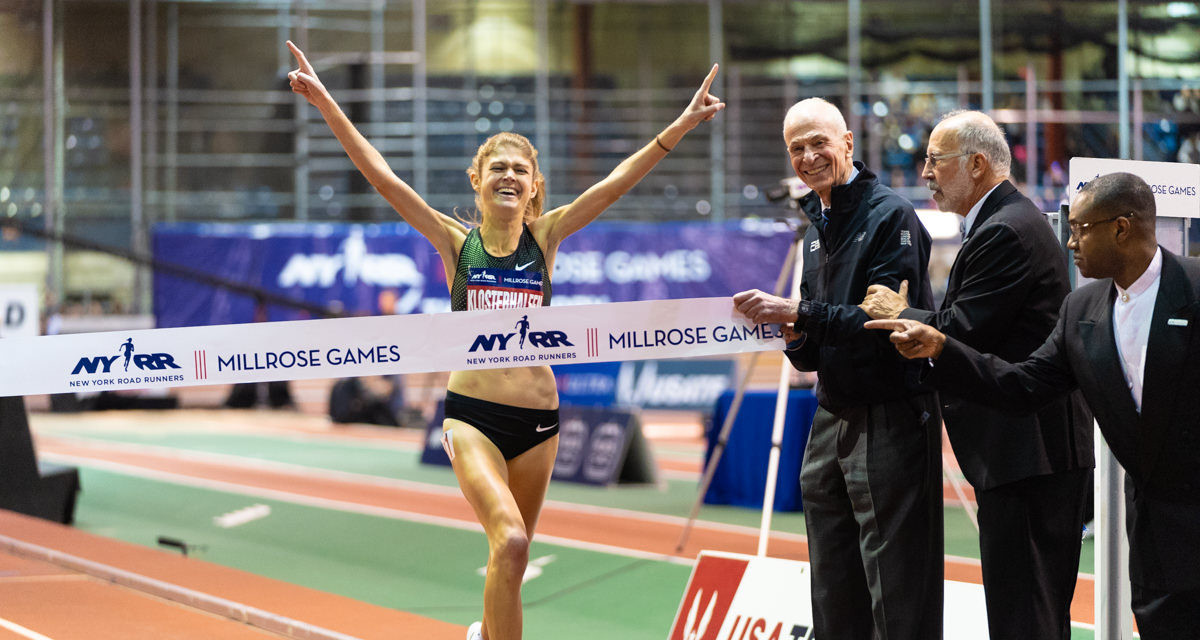
Klosterhalfen led the NYRR Wanamaker Mile from wire-to-wire last year, winning the race in 4:19.98 and breaking a 31-year-old German national record in the process. She went on to win a bronze medal over 5000 meters at the IAAF World Championships in Doha in October. The 22-year-old, who competed at the Rio 2016 Olympics, is the indoor German national record holder over one mile, 1500 meters, 3000 meters, and 5000 meters.
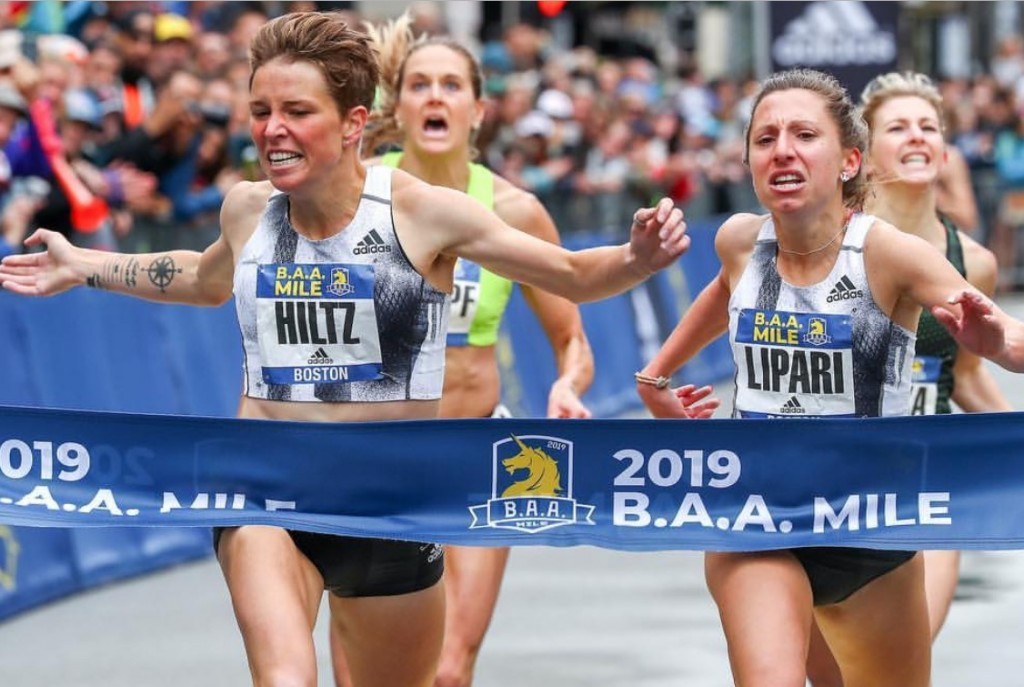
“I'm happy to be back in here to race the NYRR Wanamaker Mile again,” said Klosterhalfen. “Last year was my first time in New York and the atmosphere was great. I hope it'll be a good start into my 2020 season.”
Purrier was the runner-up at the 2019 New Balance Fifth Avenue Mile and represented the U.S. at the 2019 world championships, qualifying for the final in the 5000 meters. She was an 11-time All-American at the University of New Hampshire, where she won the 2018 NCAA Indoor Track and Field Championships in the women’s mile.
“The first time I ever ran in the NYRR Wanamaker Mile was when I was in college and it has been a special race to me ever since,” Purrier said. “It was the first time I had the chance to compete on such a big stage and against some of the world's best runners. It was one of the best opportunities I was given as a young emerging runner and certainly was a building block that helped establish my career. Now, as I represent New Balance, and return to the start line I feel very excited for this opportunity once again. Being invited to the NYRR Wanamaker Mile is a great privilege as it is one of the most pristine, competitive, and fun indoor races.”
DeBues-Stafford is the Canadian record-holder in the 1500 meters, mile, and 5000 meters, and finished sixth last year in the 1500 meters at the World Athletics Championships, smashing her own national record in the process. She represented her country at the Rio 2016 Olympics and the last two World Athletics Indoor Championships, and has won four consecutive national 1500-meter titles.
Hiltz represented the U.S. at the world championships last year after winning gold over 1500 meters at the Pan American Games. She also secured victories at the BAA Mile, Adidas Boost Games Mile, and the USATF Road Mile Championships. In her last trip to New York, she finished fourth at the 2019 New Balance Fifth Avenue Mile.
Login to leave a comment
NYRR Millrose Games
The Pinnacle of Indoor Track & Field The NYRR Millrose Games, first held in 1908, remains the premier indoor track and field competition in the United States. The 2025 edition will once again bring the world’s top professional, collegiate, and high school athletes to New York City for a day of thrilling competition. Hosted at the New Balance Track &...
more...Sifan Hassan breaks women world record for the mile clocking 4:12.33 in Monaco
Sifan Hassan, who arrived on the Stade Louis II track tonight July 12 as the third fastest miler of all time, departed the Herculis EBS Diamond League meeting as the fastest, having produced a marvel of a final lap to finish in 4:12.33, thus breaking the 23-year-old mark of 4:12.56 held by Russia’s 1996 Olympic 800 and 1500m champion Svetlana Masterkova.
Hassan had said on the day before the race that she intended to run “three or four seconds” faster than her best of 4:14.71, set in London in 2017.
As things turned out, she failed in that ambition; not that she looked too put out about it after the race as she lay on her back with a radiant smile on her face.
After the field had been paced through 800m in 2:08.20, Hassan moved into the lead with 600 metres remaining, with Ethiopia’s Gudaf Tsegay the only runner in touch at that stage.
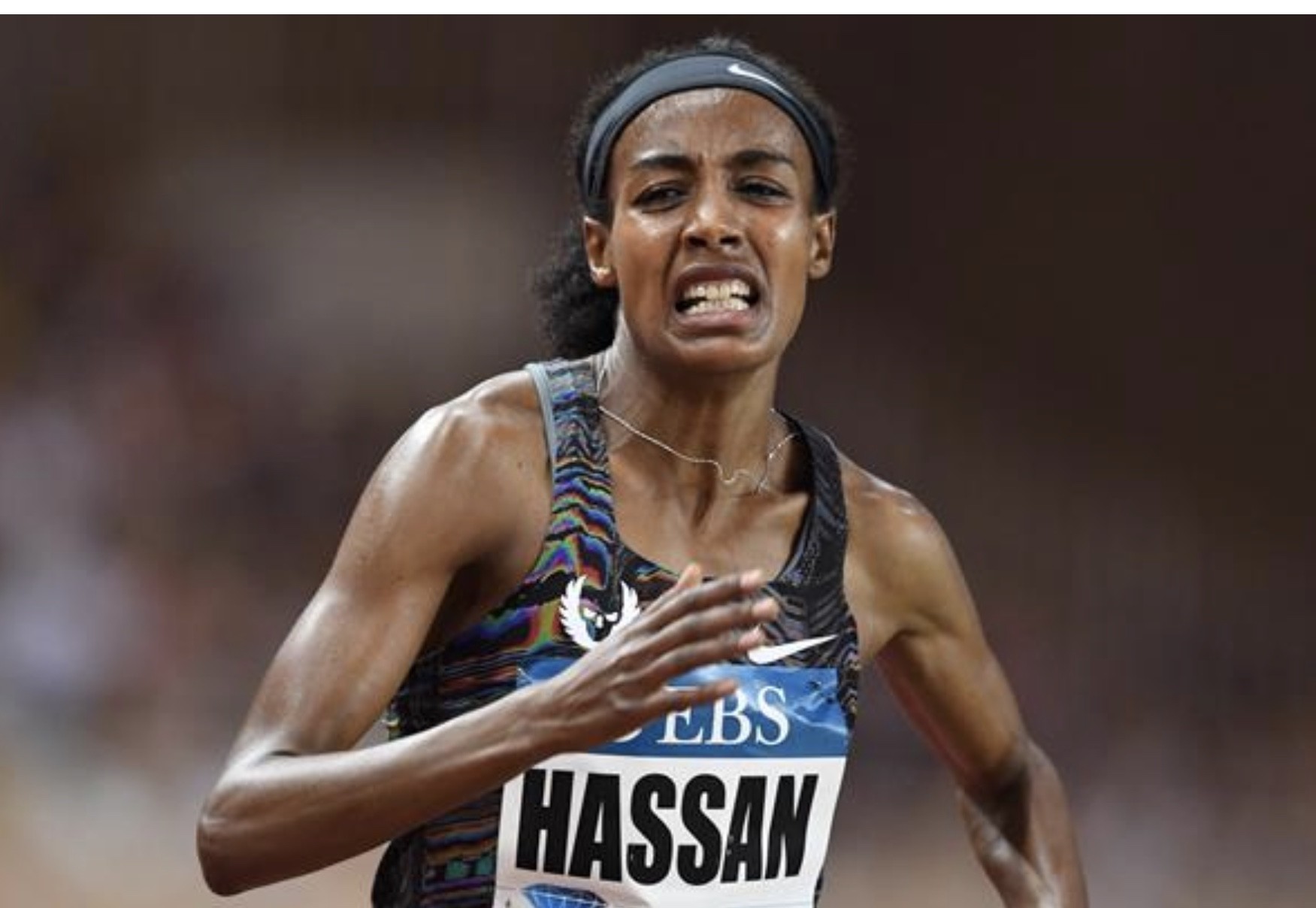
Hassan, who had broken the 5km road race world record in the Principality in February, simply cut loose over the final lap and was suitably rewarded for her enterprise by the digital clock.
In her wake the effort of chasing told on Tsegay, who faded to fourth in a season’s best of 4:18.31 as Britain’s Laura Weightman came through to finish second in a personal best of 4:17.60 and Gabriela Debues-Stafford of Canada took third place with a national record of 4:17.87.
“I knew I could run fast but the first 800 was a bit slow, so after that I wasn’t thinking it would be a world record,” Hassan, the European 5000m champion, said. “When I crossed the line I was so surprised.
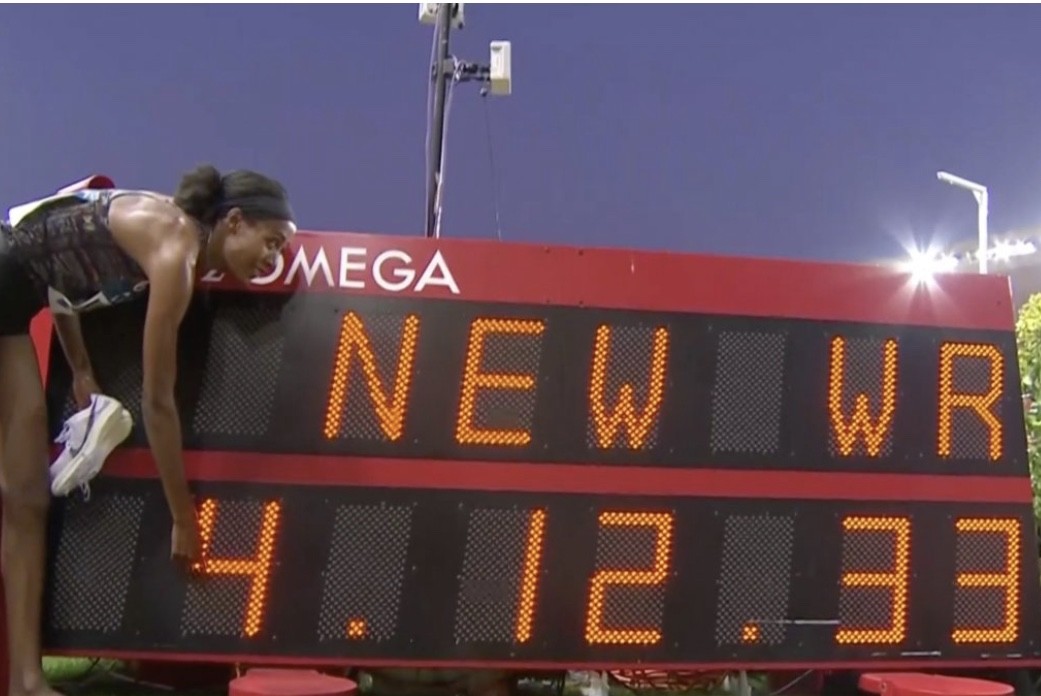
“After you run a last 400 like that, and set a world record, it gives me so much confidence over 5000m. I want to double over 1500 and 5000m in Doha and the way I finished the last 400 there, it’s amazing!”
Hassan said she had been lifted by the crowd in the closing stages of the race. “That made me extra happy,” she said. “It was a beautiful last lap with the crowd supporting me.”
Her next race, she said, would be a 5000m. “I don’t know where yet. The one world record I would love would be the 5000m.”
Before the start of the women’s mile, re-named the Brave Like Gabe Mile, a short film clip was shown featuring the US runner Gabe Grunewald who fought cancer for so long before succumbing earlier this year, and the crowd showed their respect and appreciation.
Two other Monaco world record breakers - Ethiopia’s Genzebe Dibaba, who set the current 1500m world record of 3:50.07 on this track four years ago, and Kenya’s Beatrice Chepkoech, who set a new world 3000m steeplechase mark here last year – had been due to race but had pulled out.
Whether their presence would have also have produced a world record race remains an open and, now, irrelevant question.
by IAAF
Login to leave a comment


